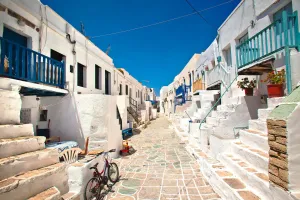It seemed somehow like it was at the end of the earth, moreover, it seemed extremely complicated to travel to the middle of the Aegean, but over time, I overcame this prejudice, although even now it was not easy to get there.
This experience quickly became the highlight of our Greece vacation, blending adventure with the discovery of hidden gems.
Read the beginning story here 👇
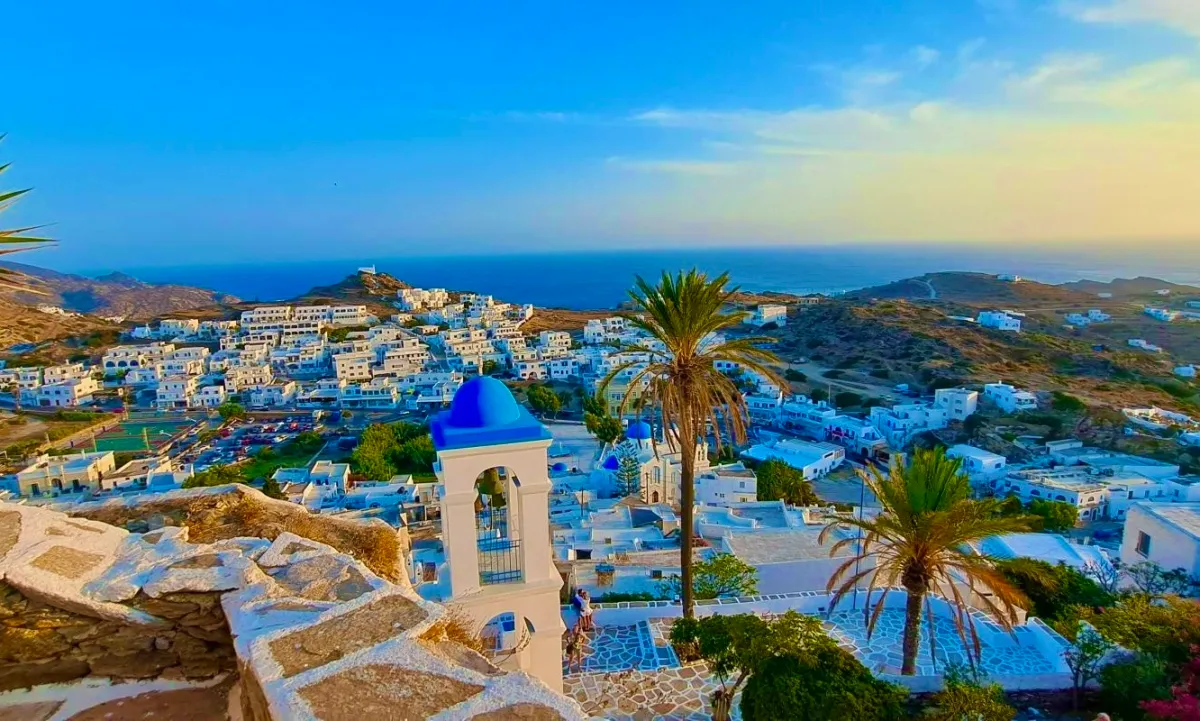
Everywhere I found nothing but praise for the little Cycladic island, rightly attributed, so I took the opportunity to include it in our travel plan for this year, curious as to why everyone had such a good opinion about a tiny, wind-beaten, arid place.
This Greece island captured my curiosity with its unassuming charm and rich history, beckoning travelers with its unique appeal.
A Few Words About Folegandros
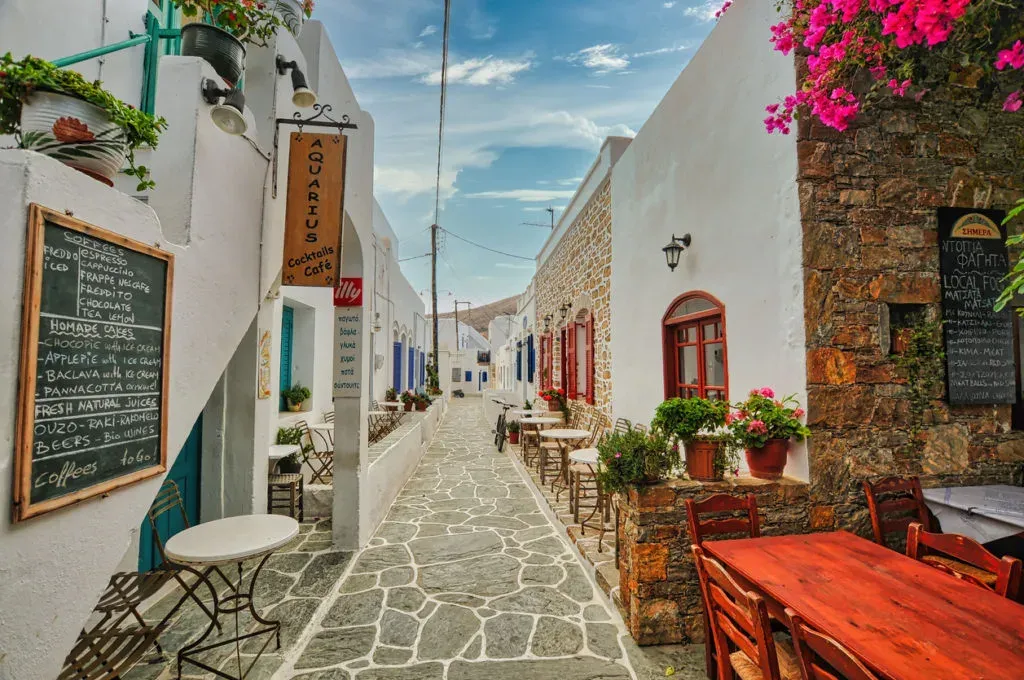
Folegandros is a small island, only 32 square kilometers with around 700 permanent residents, featuring three villages: Chora, the capital, located in the center of the island, Karavostasis, the port, situated in the southeast, and Ano Meria, located towards the north, connected by a main road, in good condition, stretching about 12 km.
As a side note, the island also has other roads that are not necessarily paved; however, I saw at least two rental centers offering dozens of cars, scooters, or ATVs in the capital Chora, so it is fairly well-traveled.
Of volcanic origin, the island has a not very high relief (max. 445 m), but rugged, with vertical, bare rocks, brownish in color, from which it is said to derive its name, the Phoenicians calling it "phelekgundari," meaning rocky.
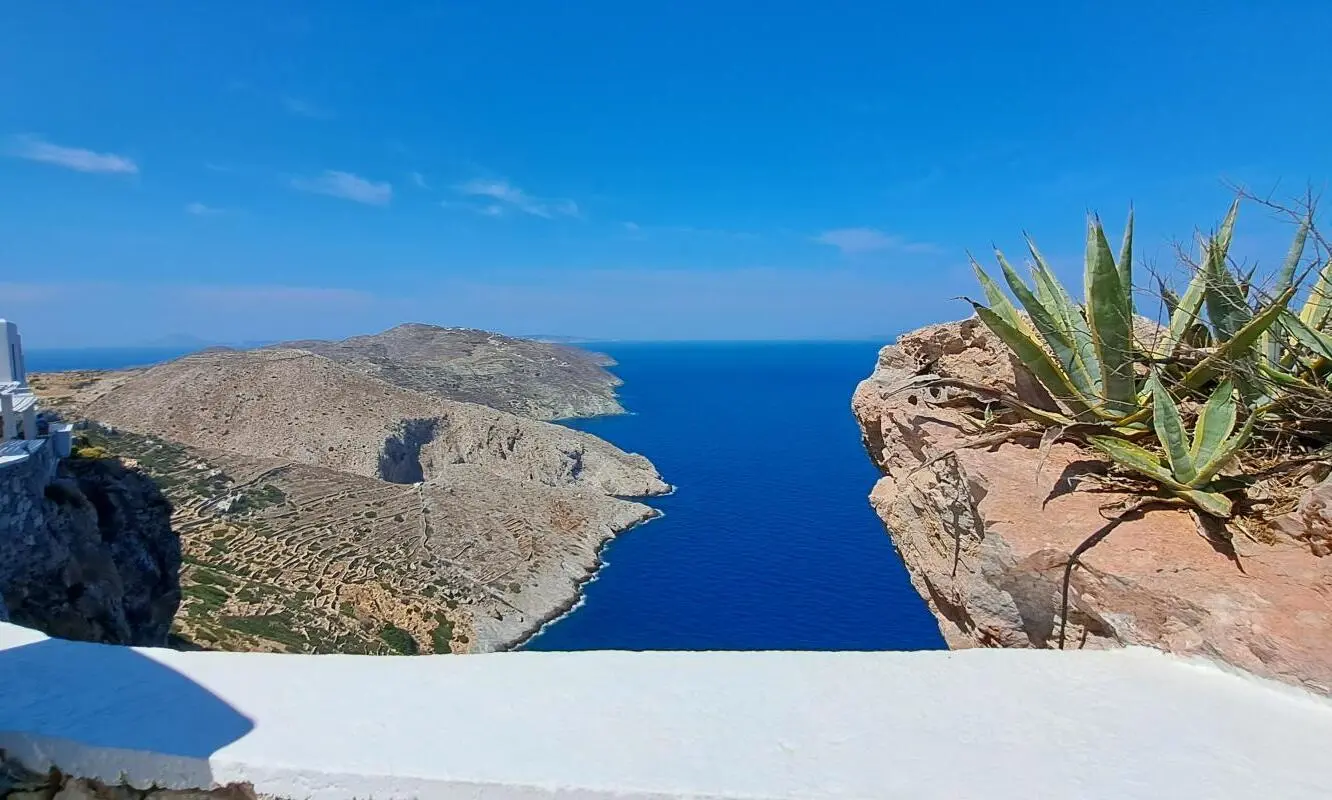
Other sources attribute the name to the first inhabitant of the island, in mythology Folegandros being one of the sons of King Minos of Crete. It was also called the "iron island" precisely because of its barren mountainous appearance, dotted with coves and small beaches here and there.
Everywhere you look, the views are spectacular, with towering cliffs, deep gorges, and dramatic rock formations. Venturing through this landscape, it's easy to see why a Greece vacation here is unlike any other, offering unparalleled natural beauty and a deep sense of tranquility.
Its vegetation is almost non-existent except for patches of wild shrubs, and the locals are engaged in animal husbandry (goats and sheep), cultivation of dwarf grapevines, beekeeping, or other limited crops.
In fact, the lands are terraced and enclosed with retaining walls to be exploited as efficiently as possible, in the sense that the water from the few rains is retained in the soil and does not flow downhill.
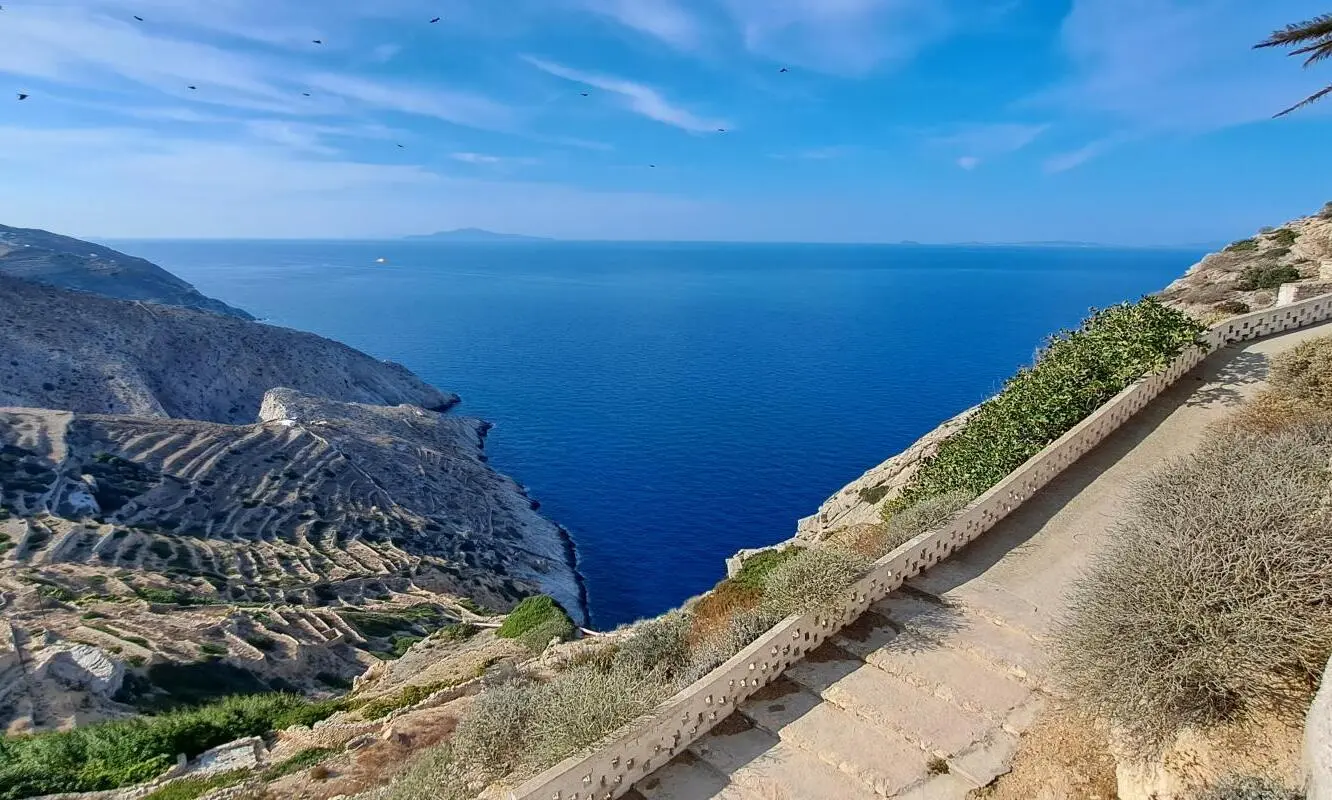
It is said that until a few decades ago, each family had a wall that they had to keep in good condition. If in any winter, streams formed that damaged it, people came and repaired it so as not to be caught by spring without their lands being protected.
Now, along these terraces, there are well-maintained paths on which anyone can walk across the island.
However, above all, Folegandros is known for its natural, wild landscapes of unparalleled beauty, for its authenticity sacredly preserved by the locals, for the fact that it has become home to many artists who have found their inspiration and the perfect space for creation, away from the hustle and bustle of popular places, altered by mass tourism.
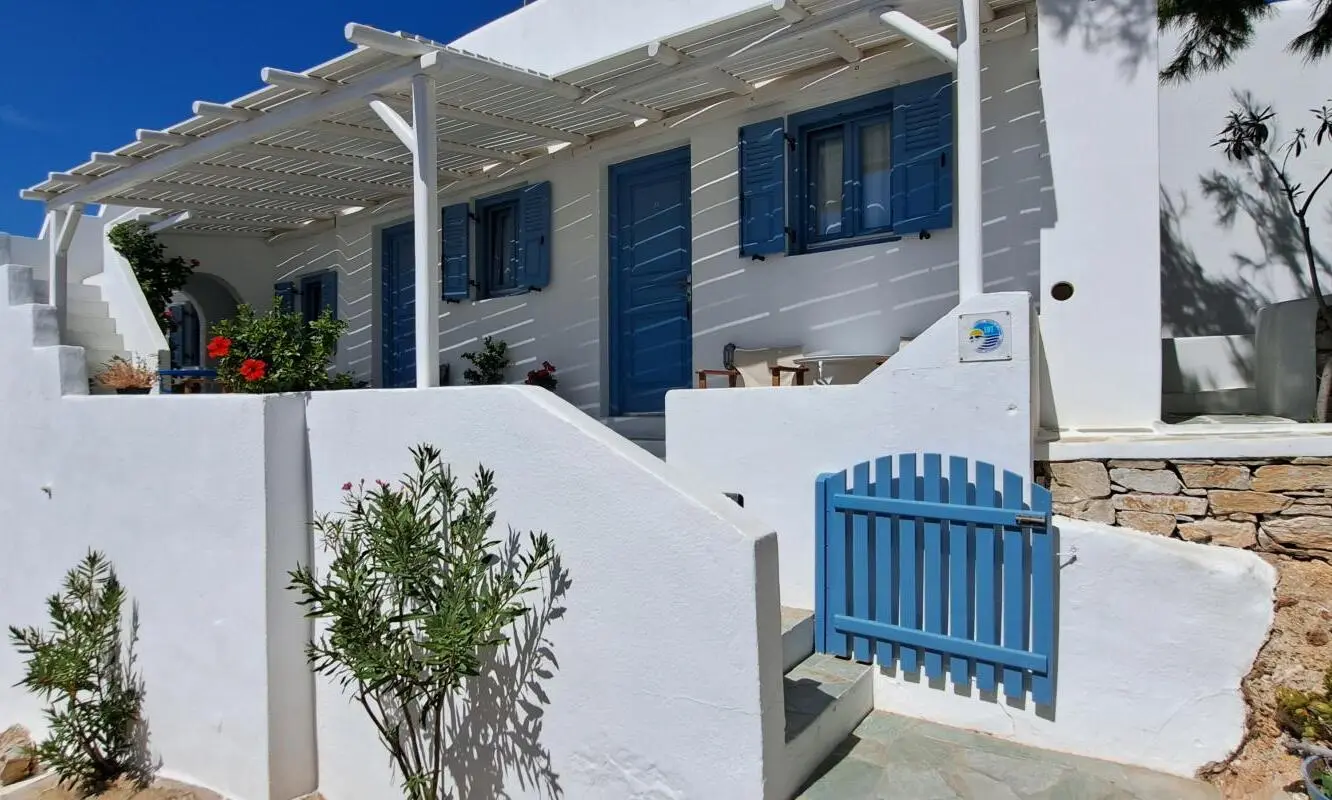
On the other hand, in recent decades, Folegandros has attracted more and more visitors curious to see with their own eyes and feel the bohemian atmosphere for which it has become famous.
The island considered chic has started to be sought after, we have met numerous Italians, French, Canadians simply in love with the relaxed life, the peace, and charm that float in the island's air.
The allure of this Greece island is undeniable, drawing in those who seek solace and inspiration amidst its tranquil beauty and rugged landscape.
What is There to See and Do in Folegandros
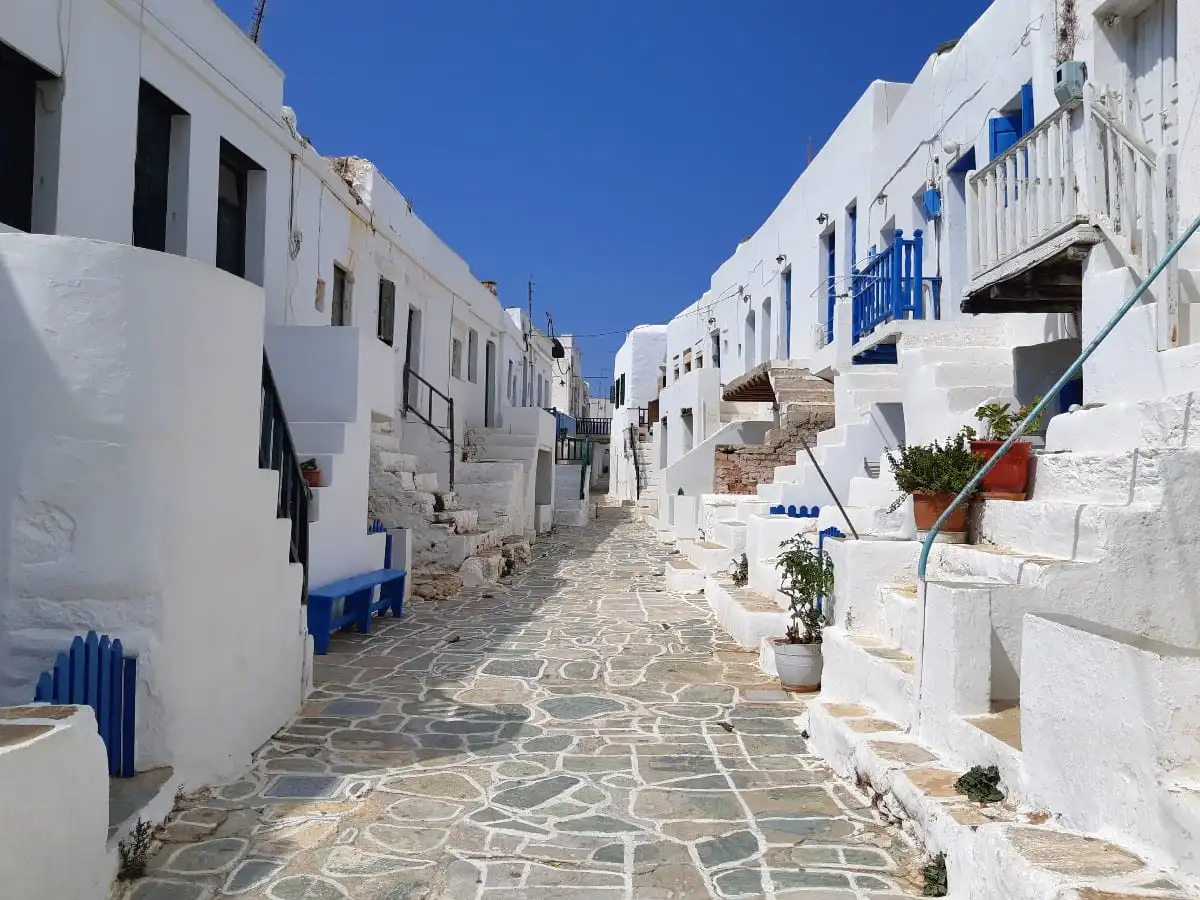
Chora, today one of the most beautiful Cycladic settlements.
The island's capital, the main town, is named Chora, as is common on the Greek islands. What is remarkable is that Chora of Folegandros is famed to be one of the most beautiful in the Cyclades, and we definitely wanted to see for ourselves if that was true.
Indeed, it has the most spectacular position, perched on the edge of a steep cliff, at a dizzying height of about 200 meters above the sea.
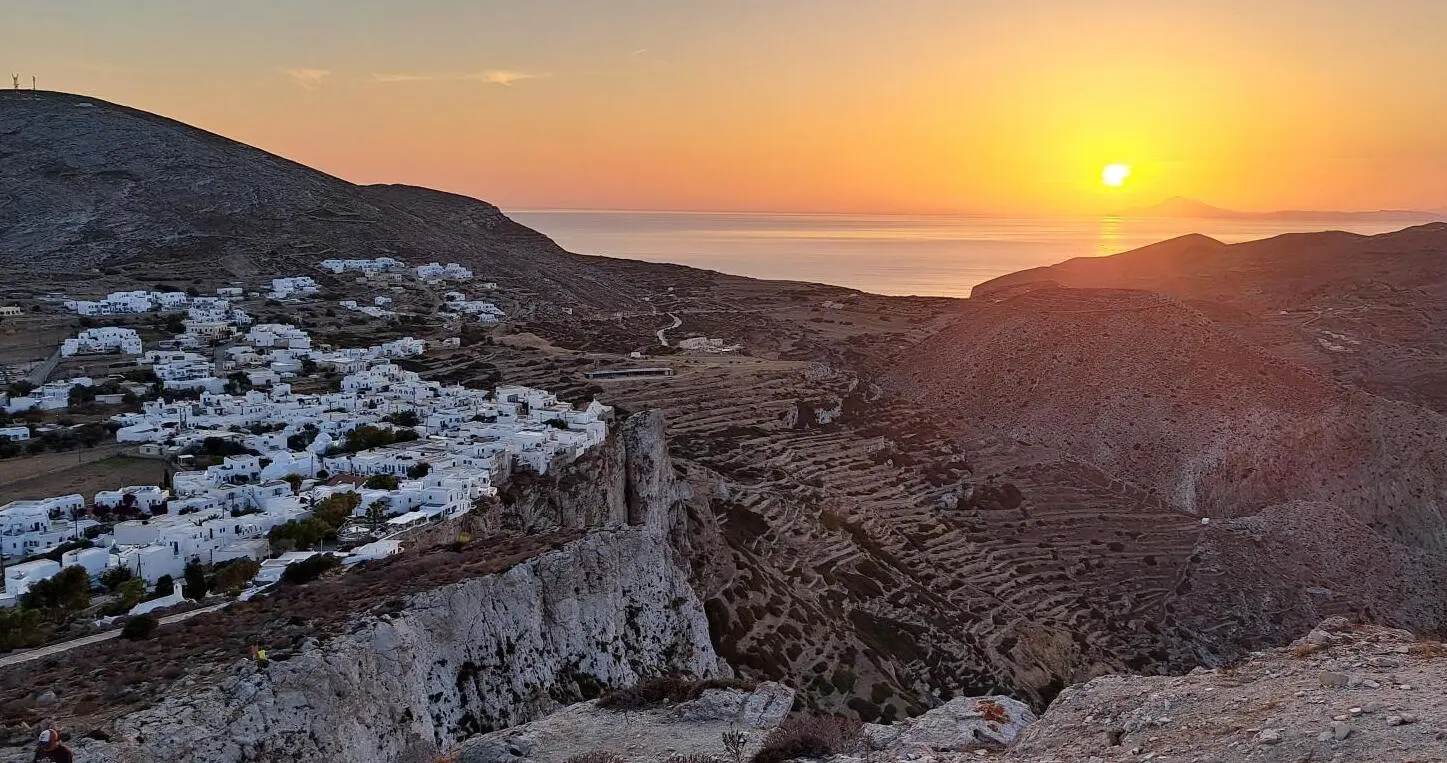
The entire town is pedestrian-only, and its narrow, cobbled alleys, painted in a honeycomb pattern, separate the traditional white-washed houses with Cycladic architecture, old churches, and romantic squares that evoke a fascinating ambiance.
Flowers hanging from the balconies of houses, the brightly colored bougainvillea bushes, all offer a picture of the island's unreal and wild beauty.
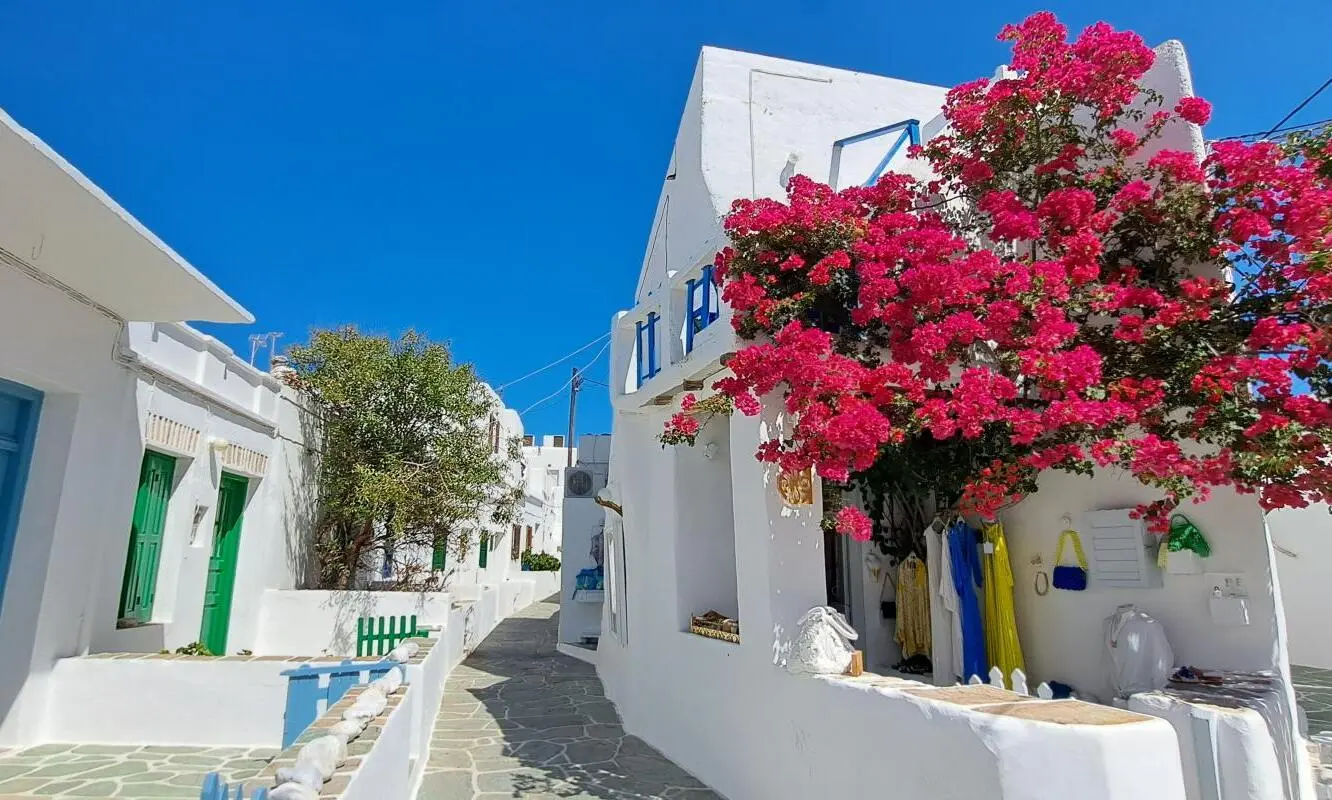
To reach the village center, you have to pass through three successive squares, lined with taverns, cafes, terraces, after the narrow alleys dazzle you with shops selling all sorts of goods, souvenirs, handicrafts, workshops where artists feel inspired to create.
From our accommodation, located at the southwestern edge of Chora, we first walked about two hundred meters on a charming alley, gazing left and right, admiring the buildings, then entered the first square:
Plateia Kritikos or Crete Square, where we saw the churches of Agios Antonios, Agia Aikaterni, and Panagia Theoskepasti, the third being very old and very valuable. We found it open at one point and were amazed to see how simple and archaic it is inside.
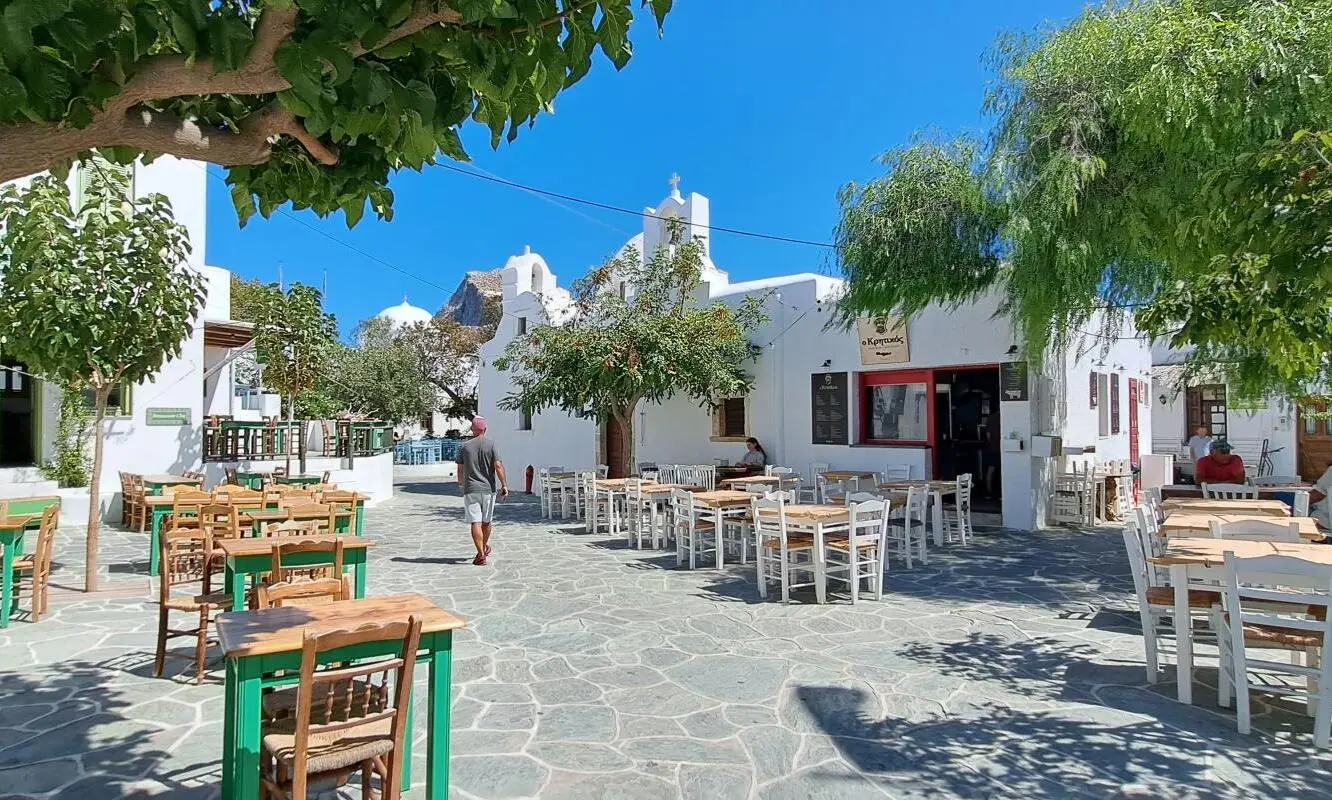
Plateia Kontarini or Piatsa is a smaller square located just a stone's throw away and on either side are the churches of Taxiarchis and Agios Nikolaos, followed by a wider opening: Plateia Dounavi or Italy Square, with a lot of terraces with tables under the generous shade of trees. In one corner, there is a toy-like little church: Stavros.
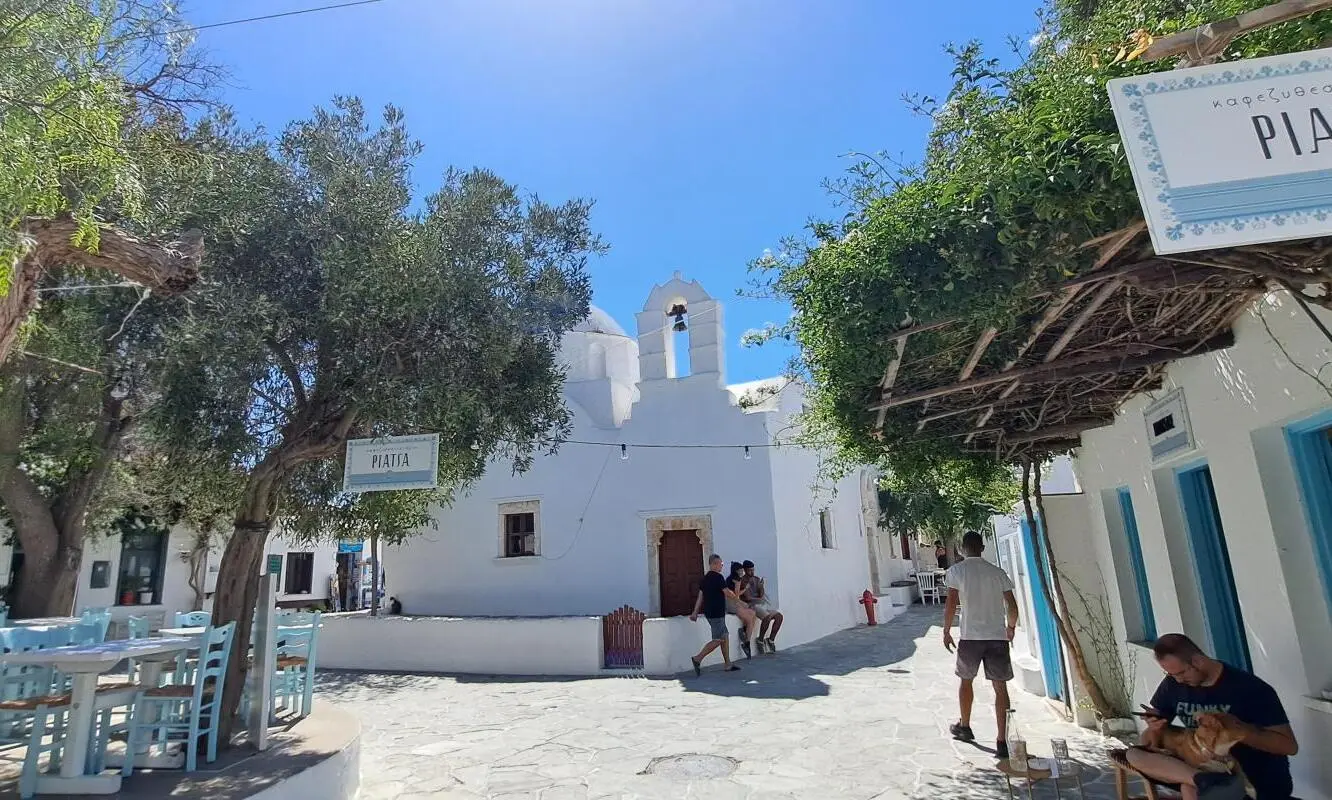
Going further, we reach the center of the village, actually the most important and the widest and most spacious square: Plateia Pounta, which has in the center a monument dedicated to heroes.
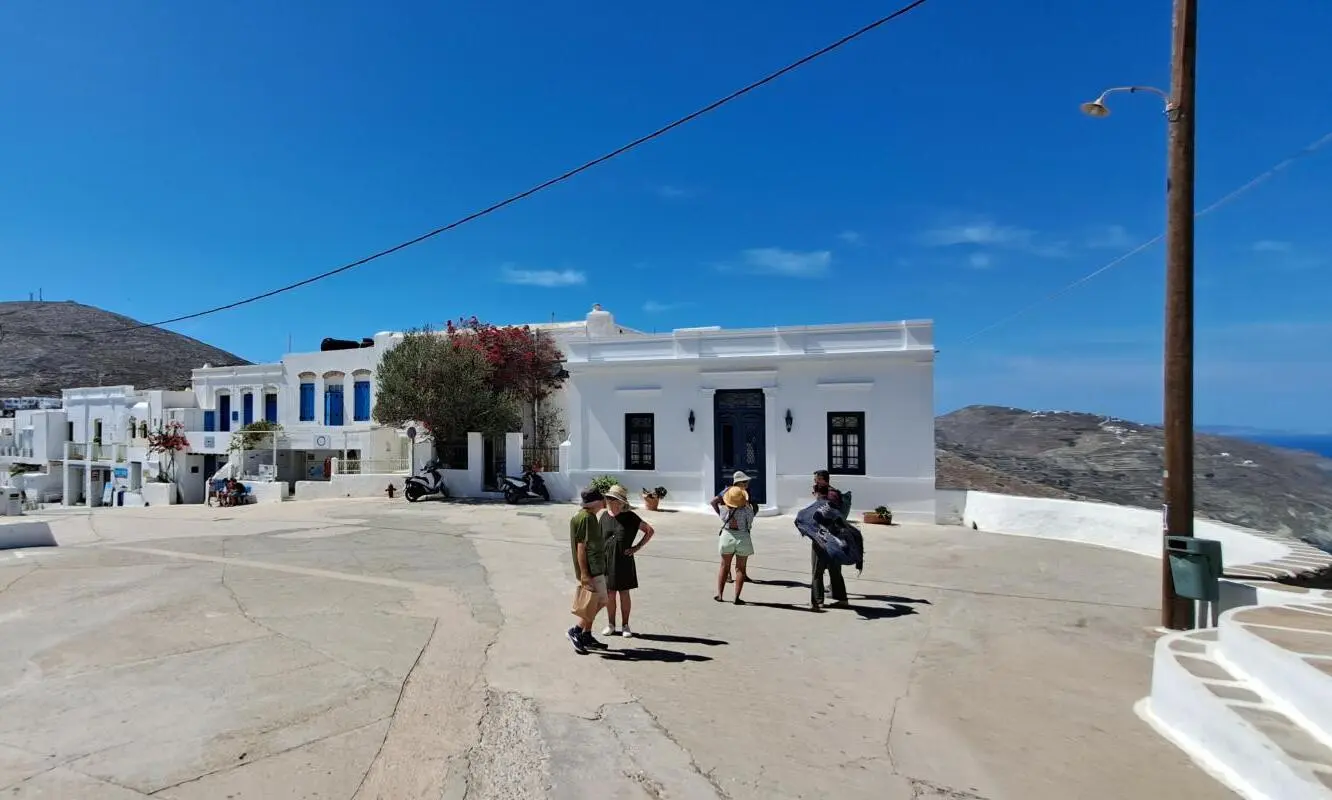
However, on one side there is the medical center, an Italian travel agency as well as an honorary consulate of Italy, demonstrating how beloved the island is among Italians. On the other side, there is a cultural center, the first school in Folegandros, now only for primary and junior high classes.
But the most interesting thing is that here is one of the best viewpoints in Chora, where it is a must to look endlessly at the sea, with the silhouettes of the islands Milos, Kimolos, and Sifnos visible in the distance.
This square also serves as the main meeting place for tourist groups. From here, a narrow street leads to the zig-zag alley towards Panagia.
Chora can boast a few good hotels, many of which have apartments or studios, which are quite popular in Greece. It also has a high school where we saw students in the courtyard because school had started at that date in September, a more imposing building of the City Hall, a post office.
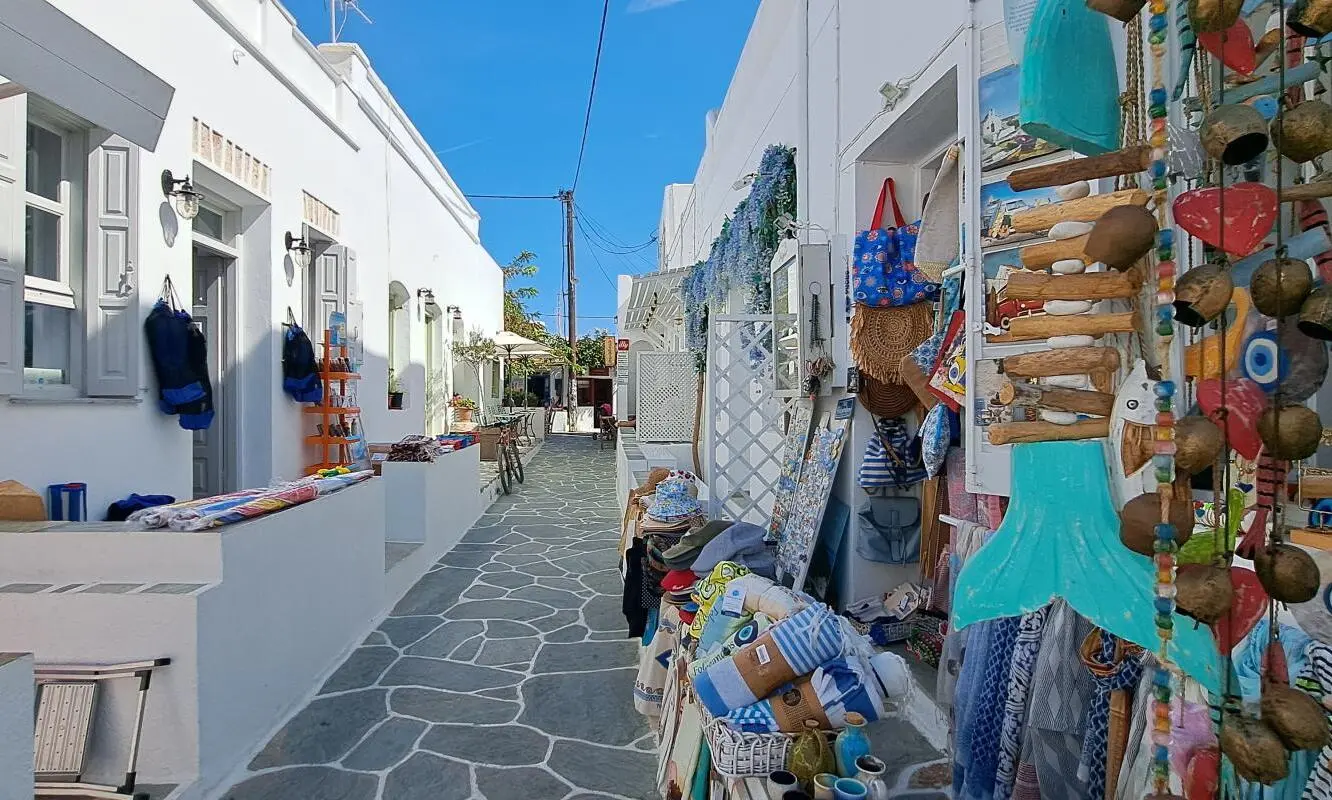
There are no banks, but I saw several ATMs or multifunctional devices that provide the necessary cash or through which banking operations can be carried out. I saw a real estate agency, a few pharmacies, a police station, a gas station, a taxi, so the island is anchored in reality and civilization.
Kastro, The Core of Chora
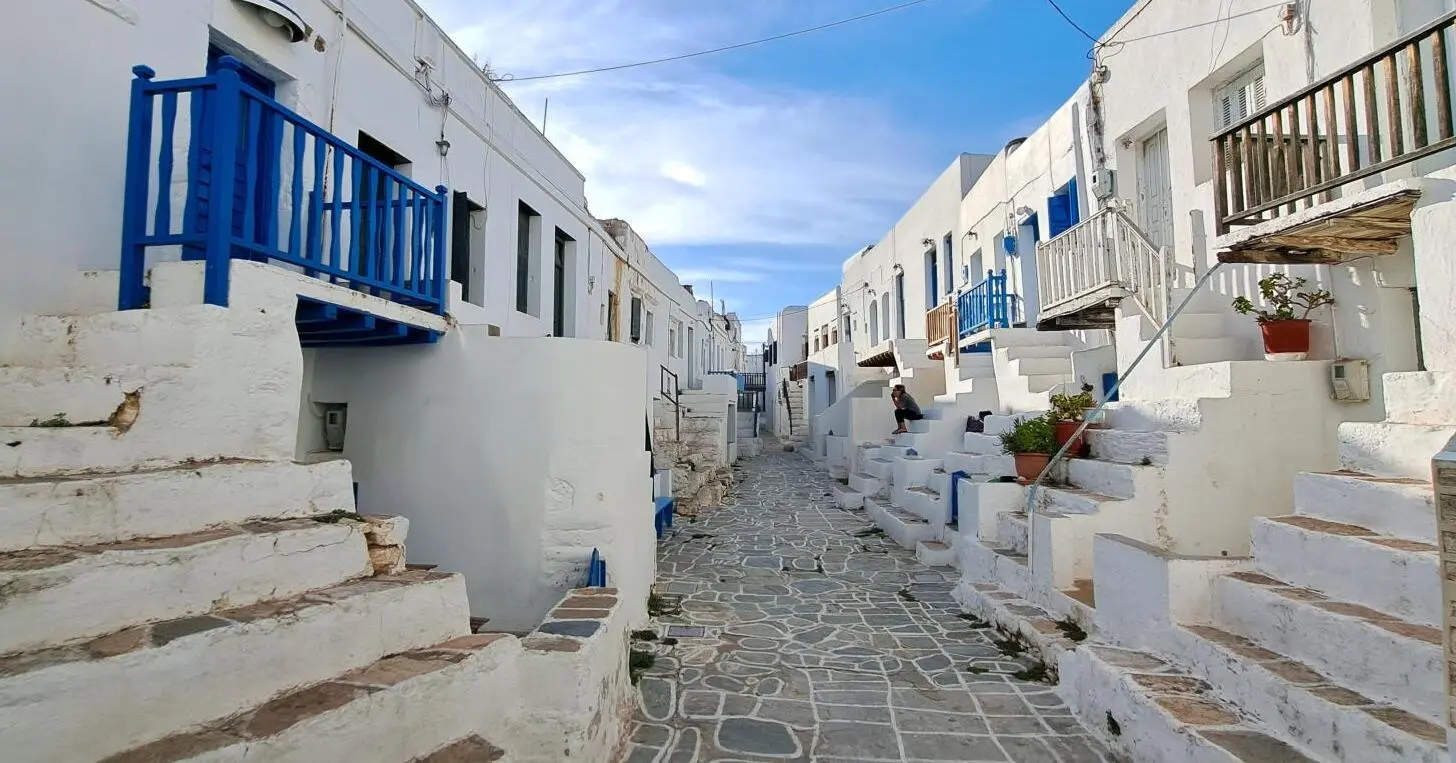
The oldest and at the same time the most attractive part of Chora is Kastro. But what is Kastro?
The neighborhood located in the northwest of Chora, whose houses hang on two sides of the rocky edge, bears the name Kastro, meaning "fortress", having been continuously inhabited for over 800 years.
This is because, after the Venetians conquered the island, Governor Marco Sanudo built a fortress where he established his residence, along with other houses. Of course, Kastro served to protect the population from pirate attacks, which were frequent at that time.
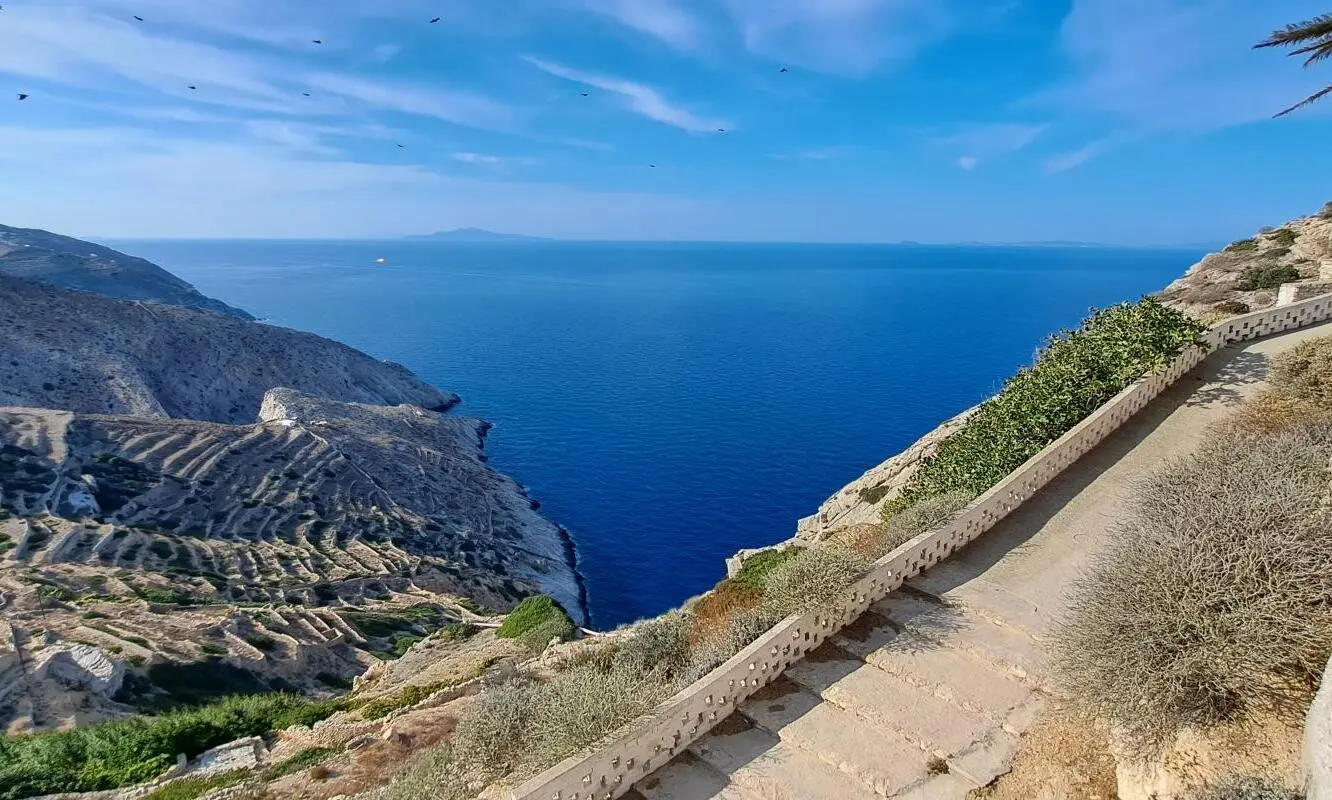
Although various rulers have succeeded over time, Kastro has remained standing, even slightly expanded and enriched with more churches during the Byzantine period. The idea is that there is no walk through Chora without at least one tour through the historic Kastro.
We entered Kastro through the so-called Paraporti, a kind of door that pierces the thick stone walls, which even had Kastro written on it, next to a cafe, named, how else, but Kastro Cafe. There is also another entrance, located a bit further west, called Lotzia, considered by most to be the main way to step between the fortress's walls.
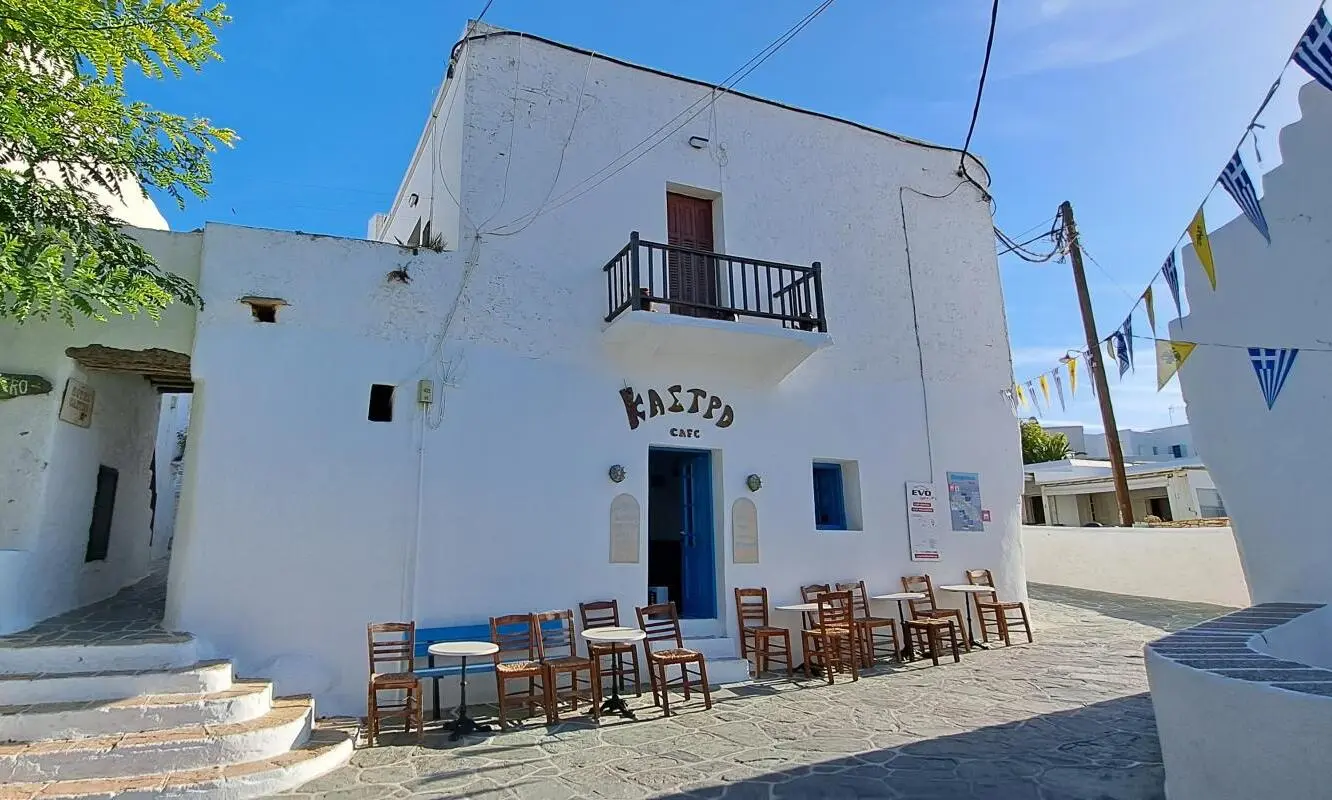
The Venetian style with stone houses, thick walls, and dual doors, placed face-to-face at a short distance, is quite recognizable. The streets are narrow, designed after a defensive strategy, in the sense that in the event of an attack, attackers who would have crowded the streets could more easily be met with a devastating counterattack.
At most houses, you go upstairs through an external staircase, and it's a good choice because an internal staircase would have taken up much of the useful space. And nowadays, many of the houses are inhabited and well-maintained.
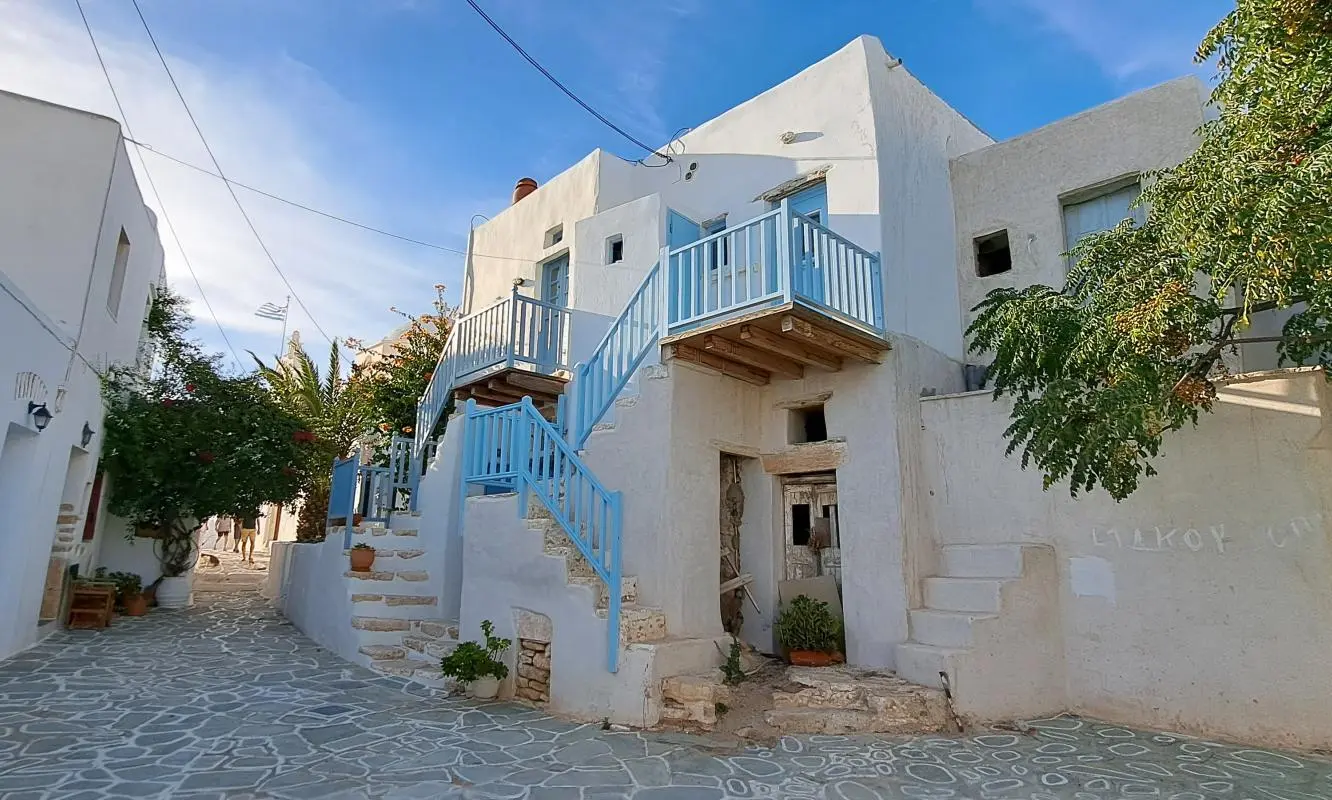
Noteworthy in the heart of Kastro, apart from these houses and charming, well-preserved streets from the medieval era, are a few small churches: Agia Sofia, Agia Eleoussa, as well as Plateia Lilis Behrakis, a slightly larger square.
Nearby, on the edge of the cliff, there is a somewhat larger church, Panagia Pantanassa. Inside Kastro, there are also a few accommodation units, guesthouses or small hotels, which can offer unique experiences to those wishing to live in historical buildings.
The Church of Panagia, the Symbol of the Island
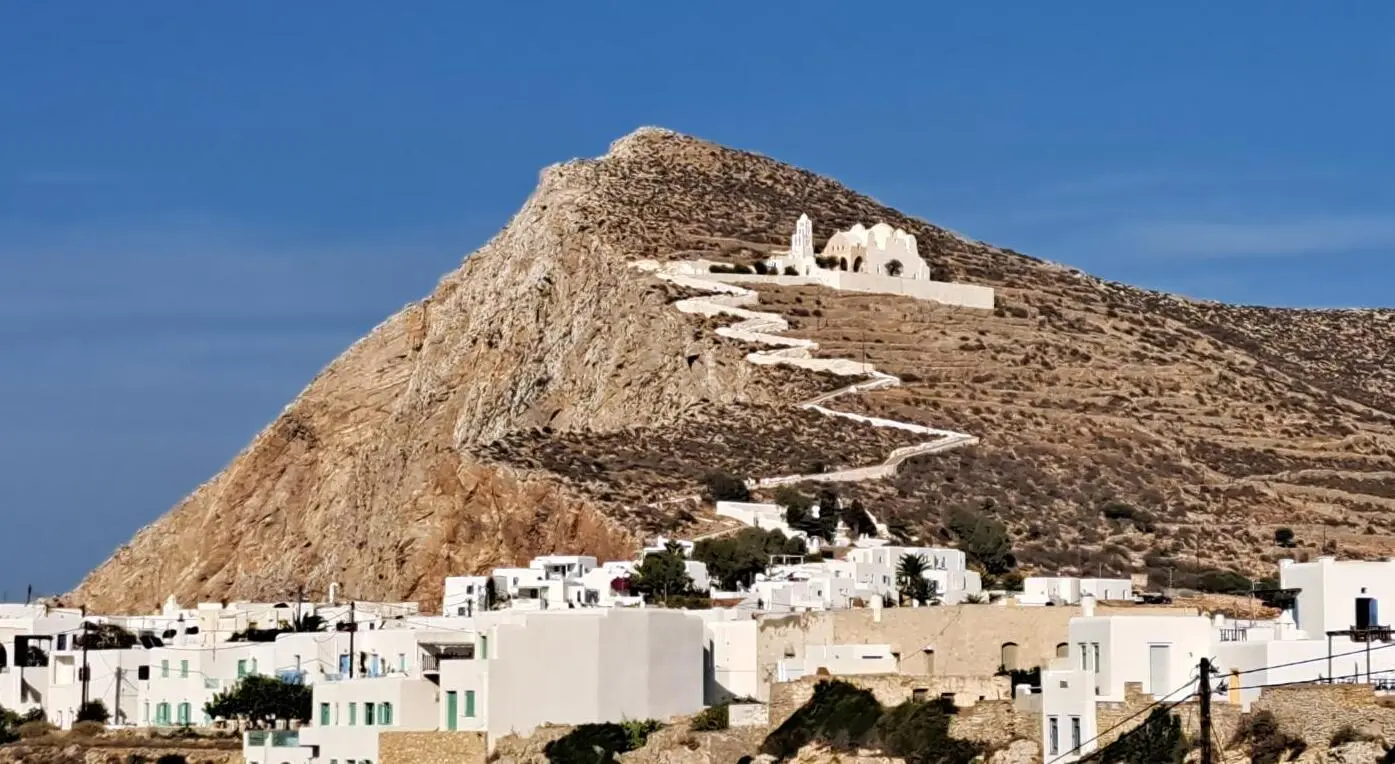
I think you've seen at least once the iconic image of Folegandros on postcards or promotional materials, represented by the Church of Panagia perched on a peak of rock to which a white alley built in zig-zag climbs, remarkable in contrast with the dark-colored background of the mountain.
In antiquity, there would have been a temple dedicated to the deities Apollo and Artemis, and later in the Middle Ages, a fortress called Paleokastro, only in 1821, after reconstruction and renovation, the church taking the form that can be seen even today.
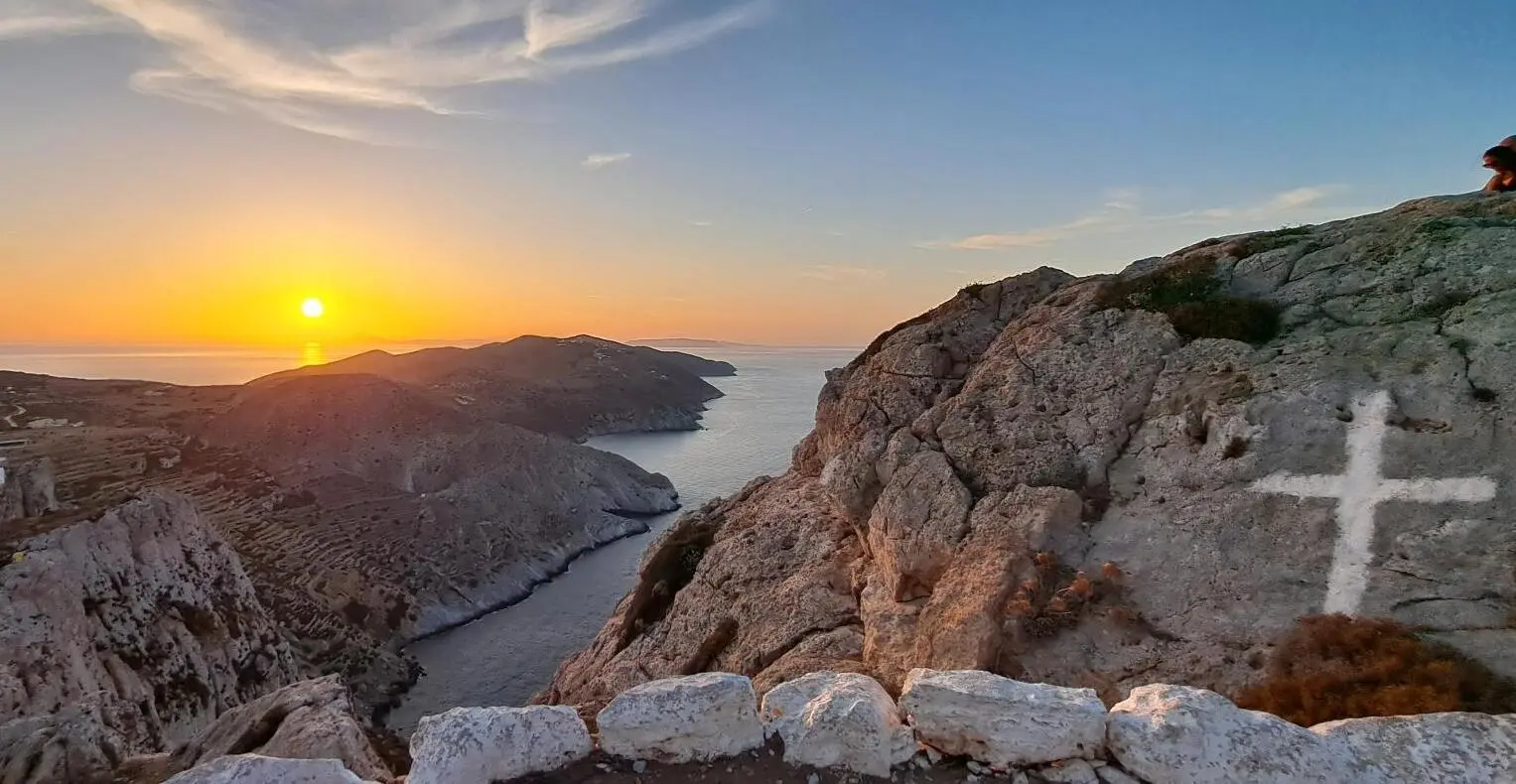
It is built in the Byzantine style, dedicated to the Dormition of the Mother of God, and can be considered the island's largest place of worship. Its interior preserves some ancient inscriptions that recall the history of the place, as well as a valuable iconostasis with pieces considered to be miraculous.
A climbing walk up to Panagia takes no more than 20-25 minutes including breaks for catching your breath or taking photographs, because yes, it is the best place from which Folegandros can be admired. It is noticeable that the town stretches almost to the edge of the last cliffs, as if just one more step would have it tumble into the sea.
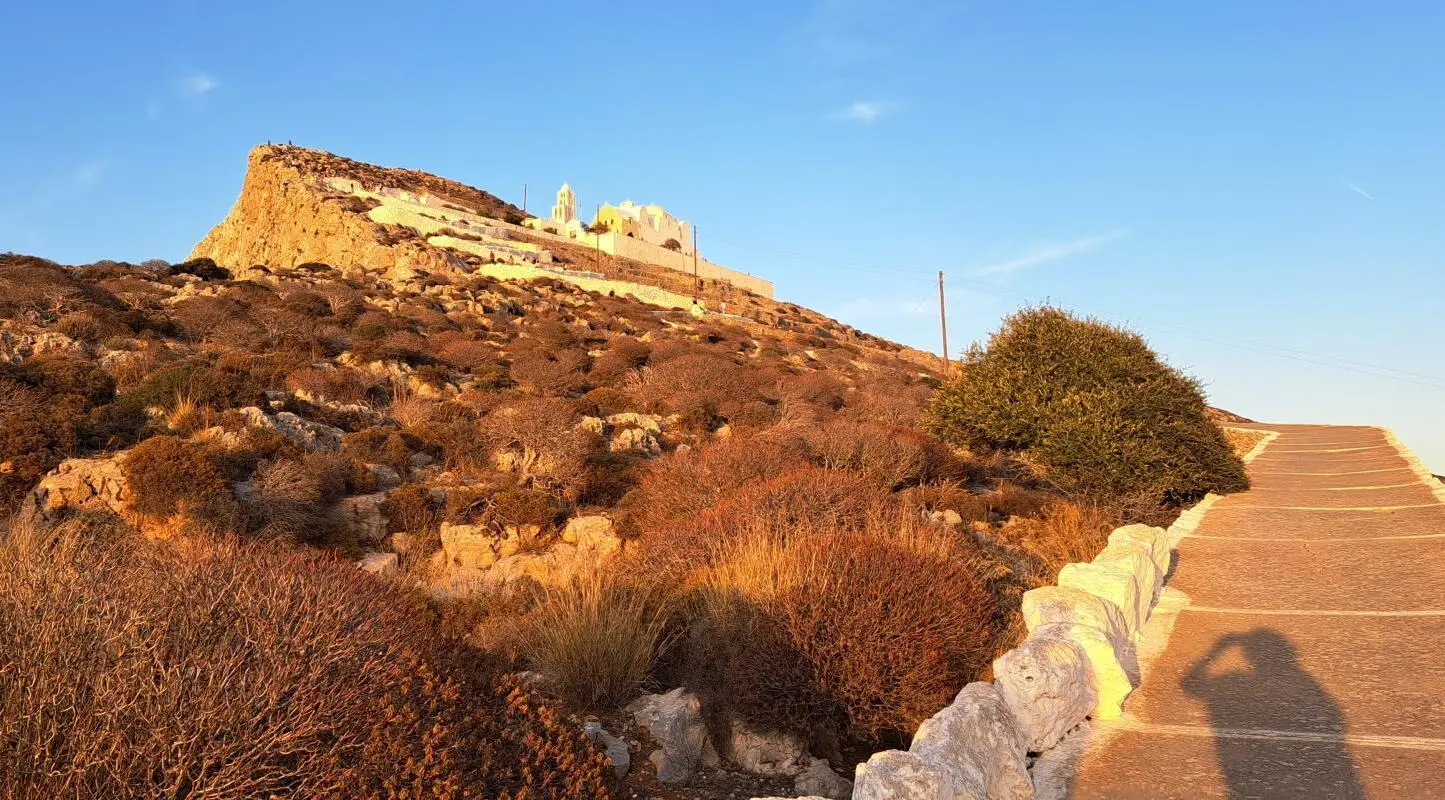
Of course, it is the ideal place to admire the sunset, a kind of Oia from Santorini, with magical images from above, over Chora when the sun is getting ready to set. During the two evenings we spent in Folegandros, we witnessed beautiful sunsets along with many tourists who came to enjoy, just like us, unforgettable landscapes.
Karavostasis, the Gateway to Folegandros
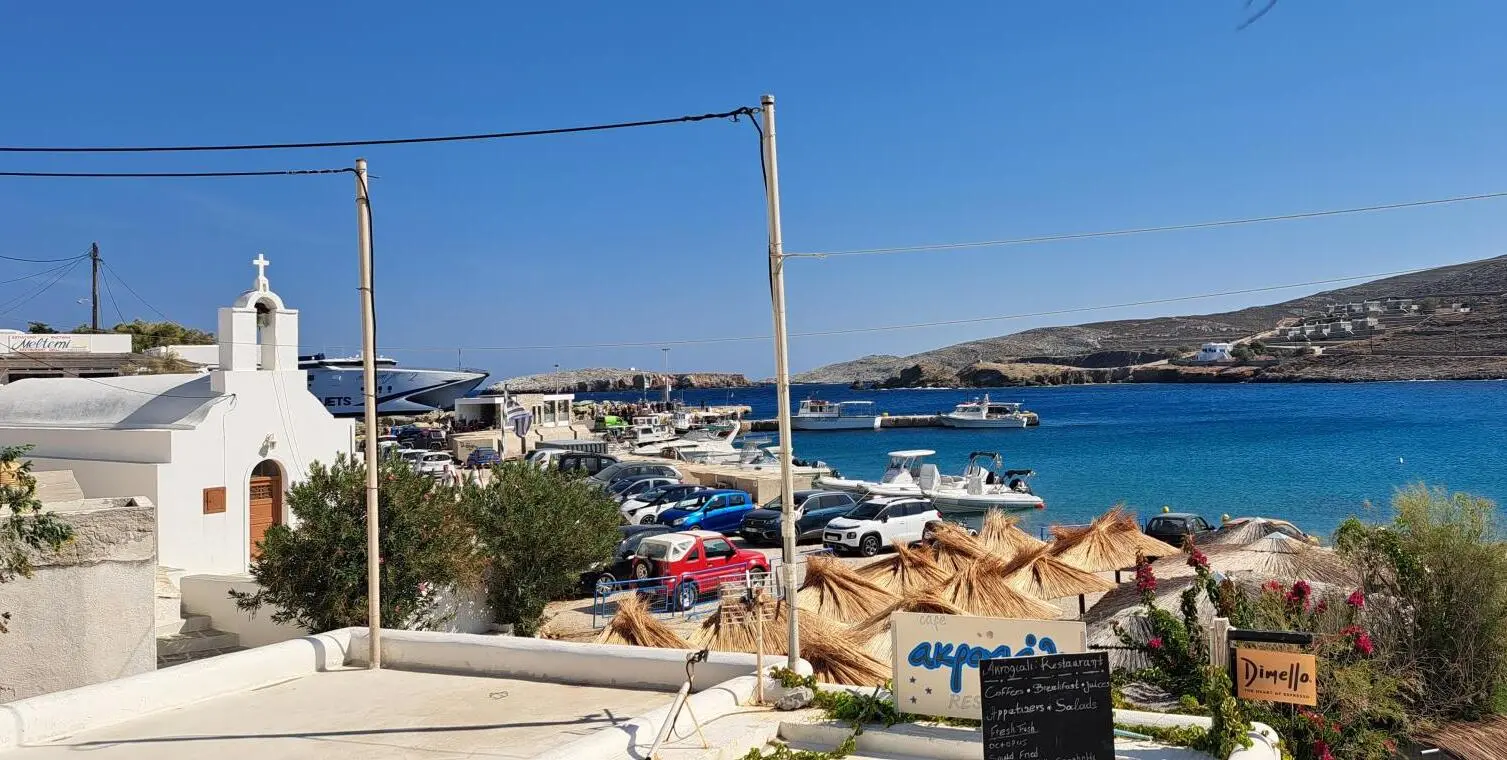
Since on the day of our arrival in Folegandros, we were quickly "fished out" by the host's envoy and hadn't managed to see much of the port, on the day we left the island, we asked Cristhine to send us to the port a couple of hours earlier to take a look around and get an impression of the port as well.
The port is full of life, mainly because it is always transited by those coming to or leaving from Folegandros. However, apart from the bus station, the Port Authority, and the Port Police, there are also a few hotels, guesthouses, as well as shops, cafes, and good taverns with a fishing profile. Even a bakery and an ATM.
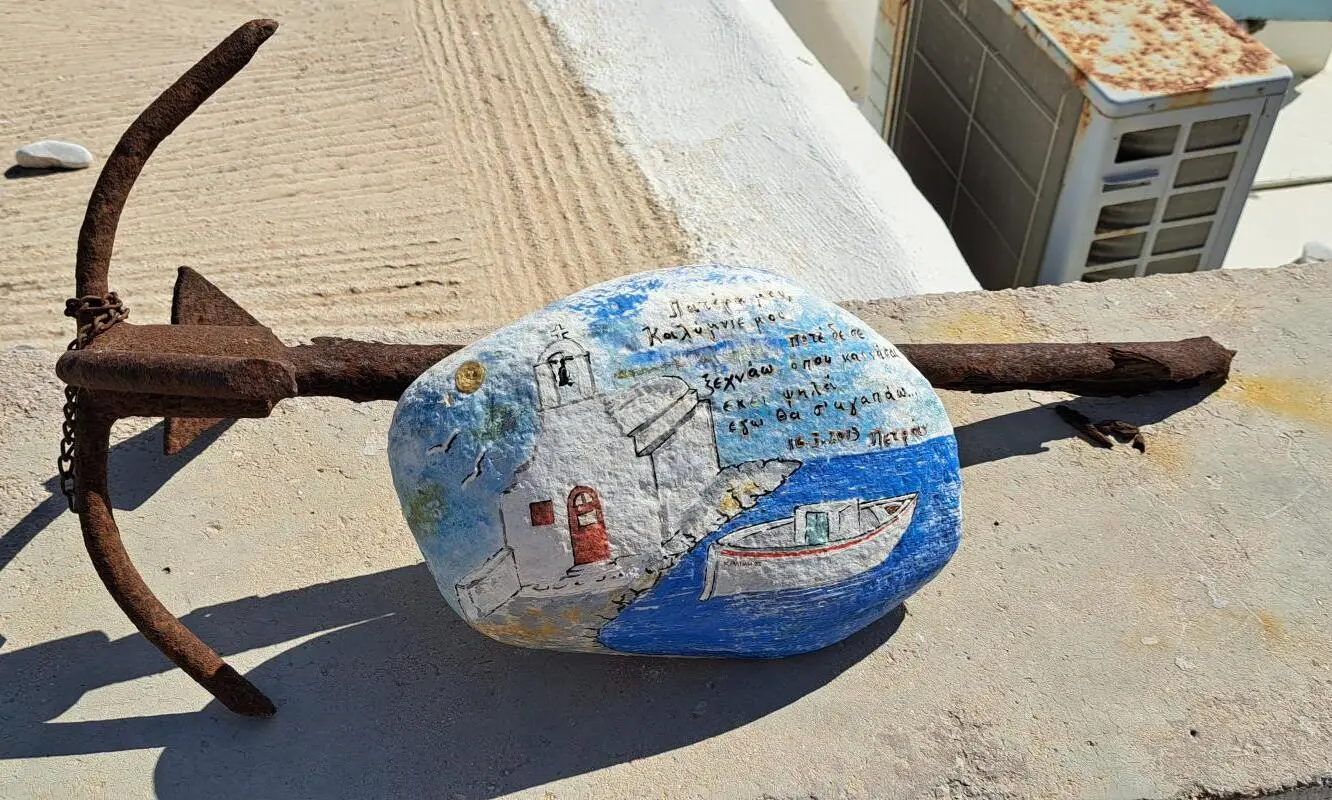
We left our luggage for a fee (6 €) at the Faros hotel, which also offered this service, and started walking to explore the small fishing settlement that now aspires to be a holiday resort.
Of course, if you ask me, I wouldn't have chosen Karavostasis as a holiday district for the two days, although it has two pretty good beaches.
The first, Chochlidia, is right to the right, as you look out to sea, next to the port terminal. It's long, made of stones and pebbles, and has a gentle entrance into the water. It was populated by families with children at the time we visited it almost to the other end, and the color of the water is an amazing blue.
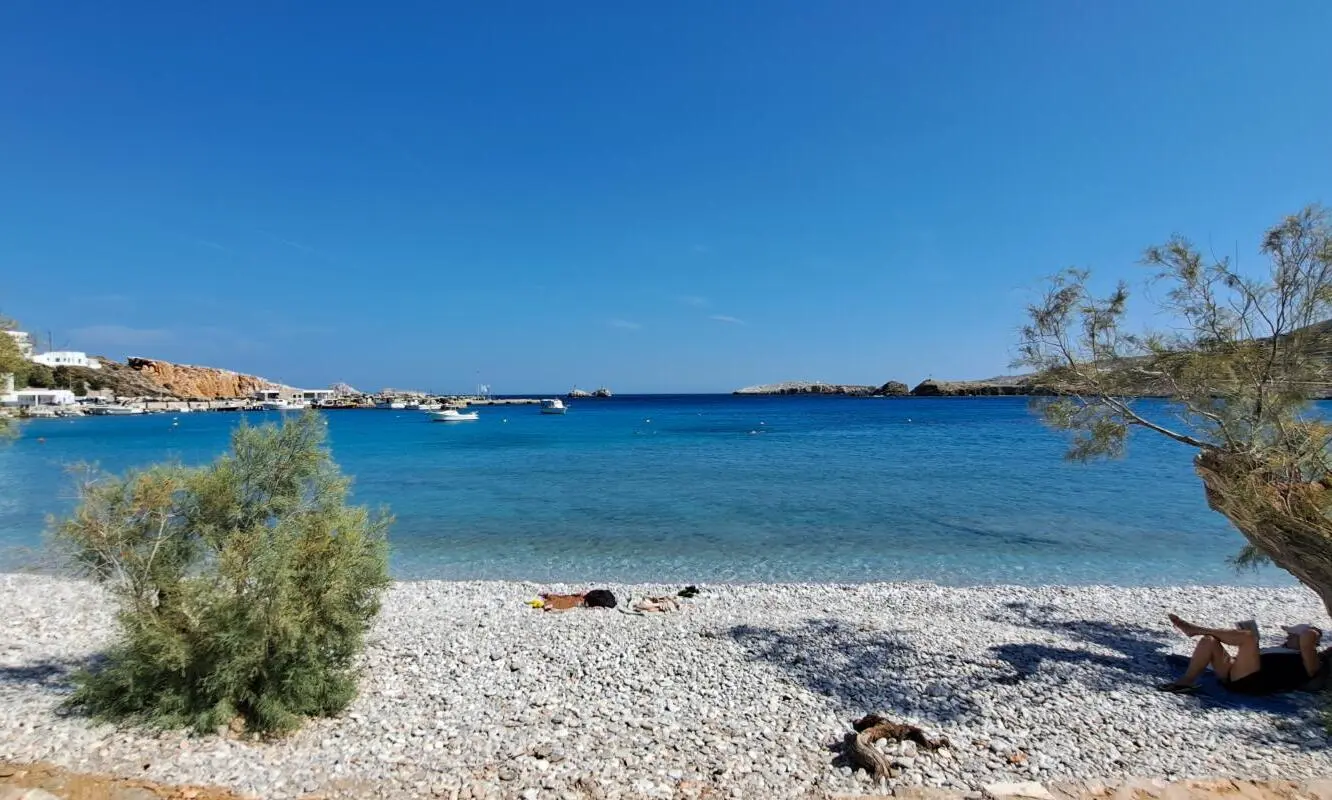
To see the second, Vardia, we went up, over the hill. Vardia is much more spectacular, accessed via specially constructed stairs. It has a base of coarse sand with pebbles, but the sea water, which is also a strong azure shade, deepens after a few meters, making it sought after only by swimmers.
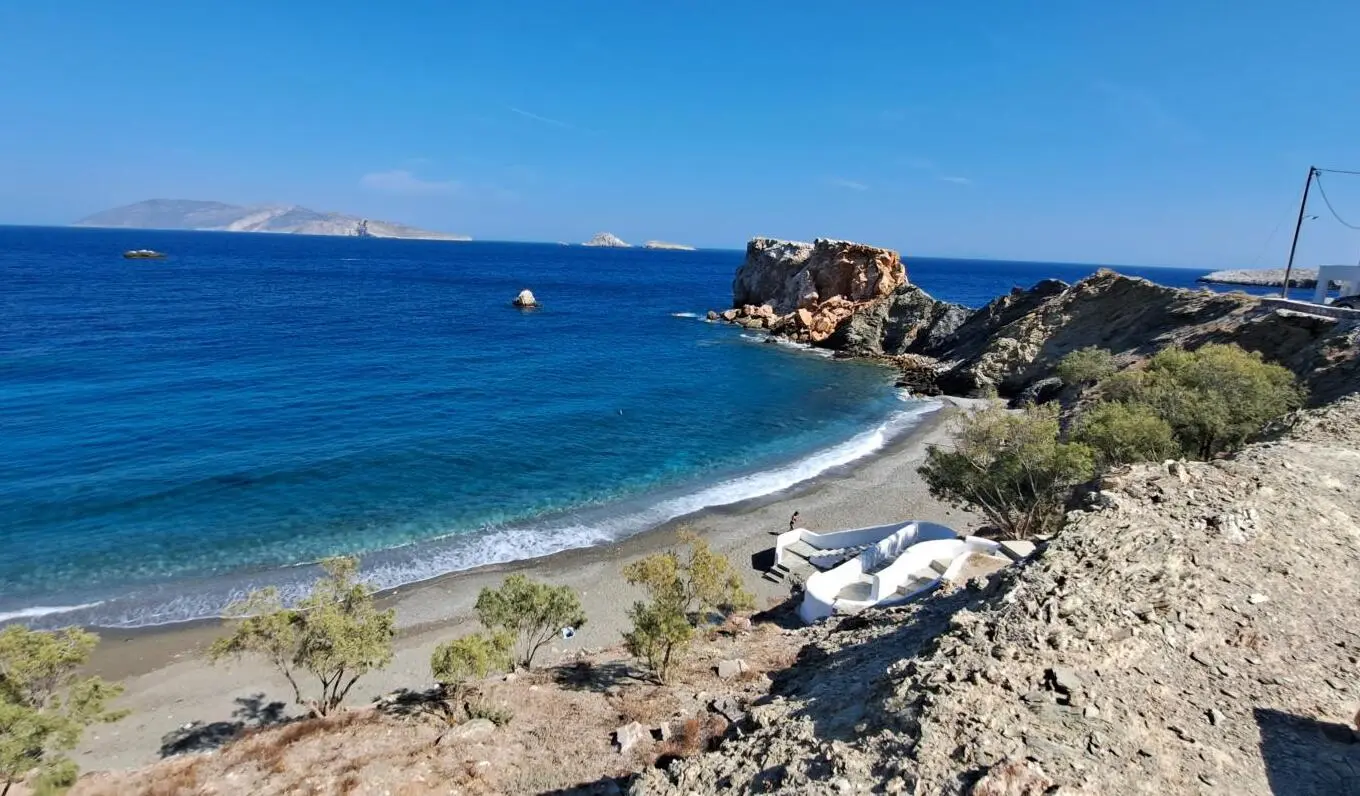
As a general opinion, formed in two hours, Karavostasis is too small compared to Chora, and what negatively impressed me was seeing several accommodation units closed or abandoned, overall it does not have a welcoming atmosphere, it bears no resemblance to the sophisticated Chora.
Honestly, even though I initially wavered for just a few moments between Chora and Karavostasis, I was very glad that I listened to my tourist instinct and reason to choose Chora, which I warmly recommend to anyone, even if they were to stay just a few hours on the island.
Wild, Undeveloped, and Hard-to-reach Beaches
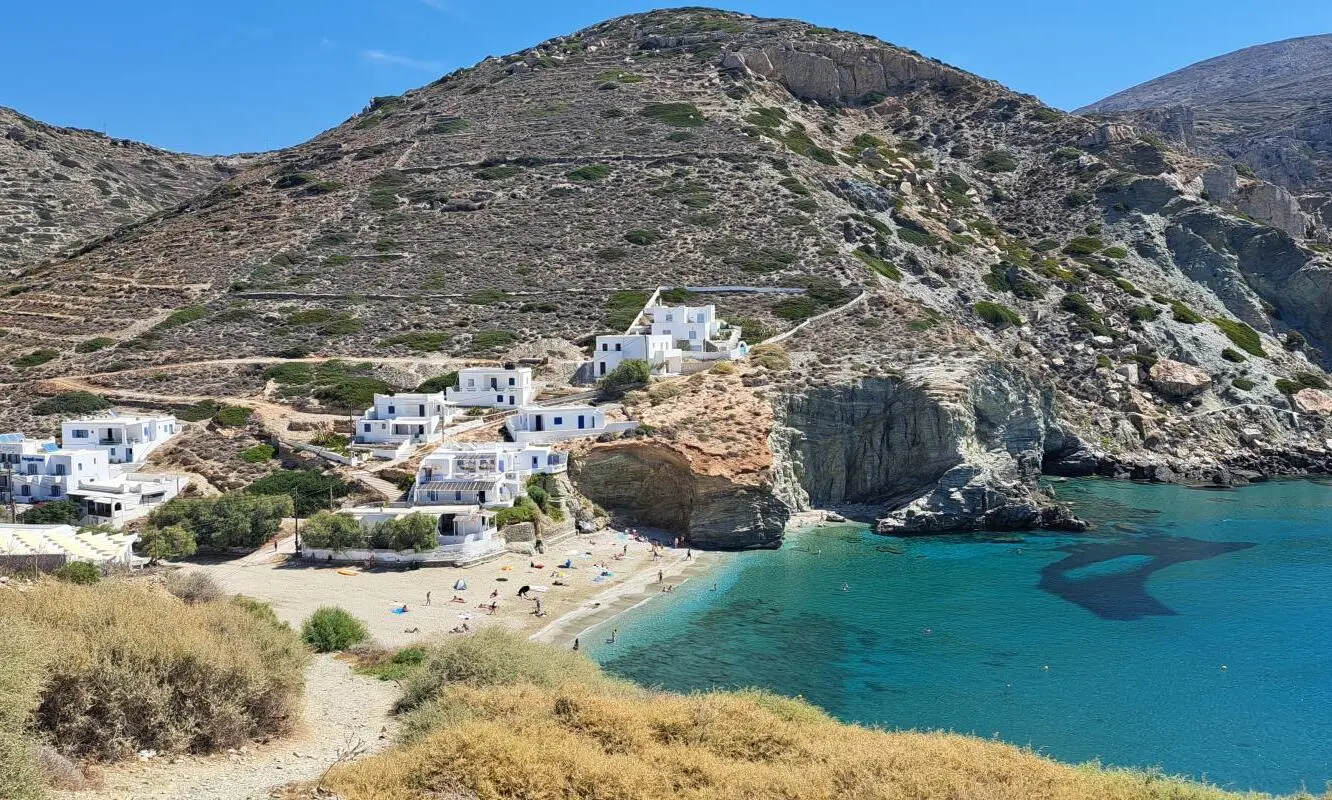
I've briefly mentioned the port's beaches, but Folegandros has several more beaches. However, given the island's rugged terrain, these are more difficult to access from the interior, with some being much easier to reach by sea.
However, not wanting to leave Folegandros without spending a few hours at the beach, the next day we set our sights on Agali Beach located on the west side of the island, a short distance from the capital, towards which we saw a schedule with frequent routes that allowed for a few hours of lounging in the bath and sun.
From Agali, we knew we could see two more quite wild beaches: Galyfos and Agios Nikolaos, if we ventured on a dirt path for about 20 minutes to the right. Had we moved to the left, we would have found Fira Beach, a small cleft that is quite difficult to reach.
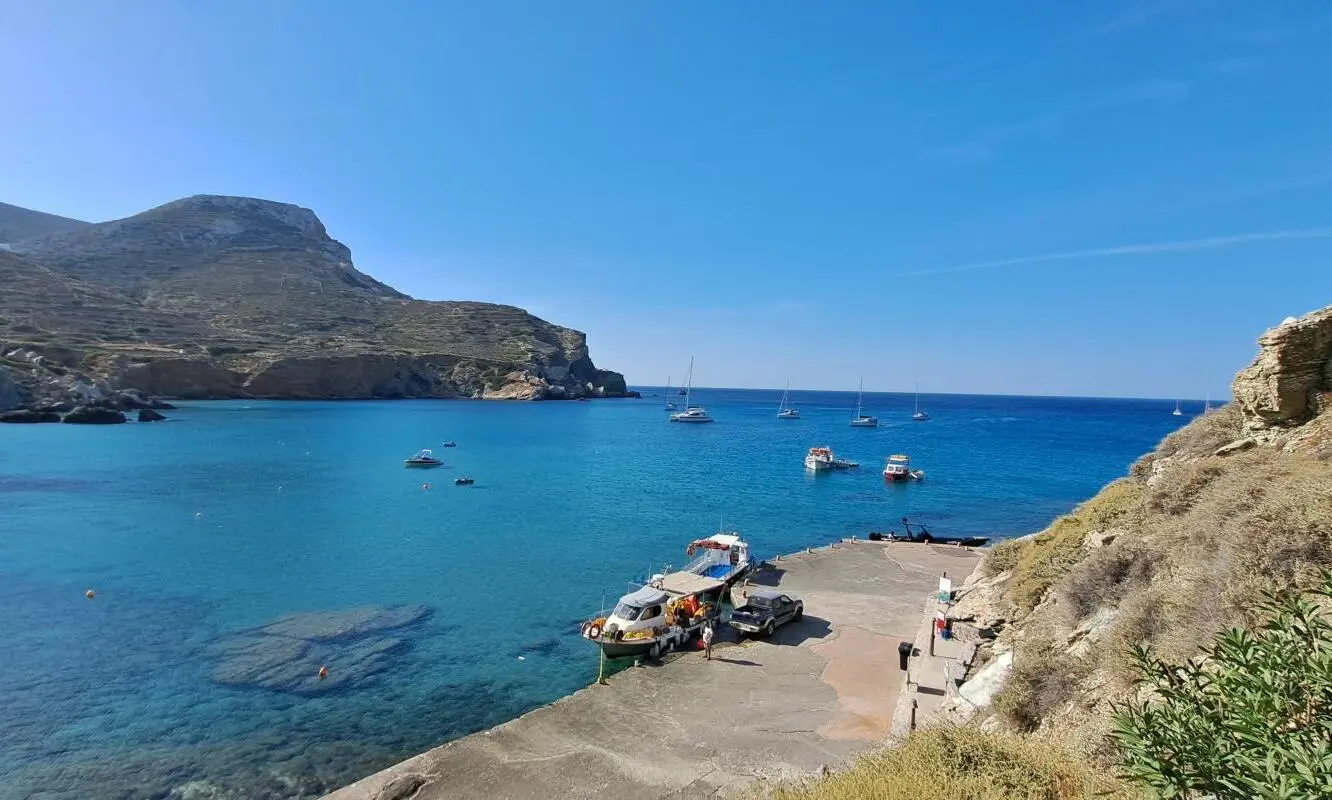
After breakfast, we slung our bags over our shoulders and headed to the bus station. Along the way, we came across a sort of office from where we bought round-trip tickets (6 €/person), then the bus, which was just a minibus, first headed towards Ano Meria, then veered left, descending on a very narrow but relatively good road.
We decided not to stay at Agali, which we admired from both below and above, but to go to Agios Nikolaos to spend a bit of time, and we didn't regret it at all. We went over the hill, first coming upon Galyfos, next to which we saw an eco accommodation unit that did not use electric power.
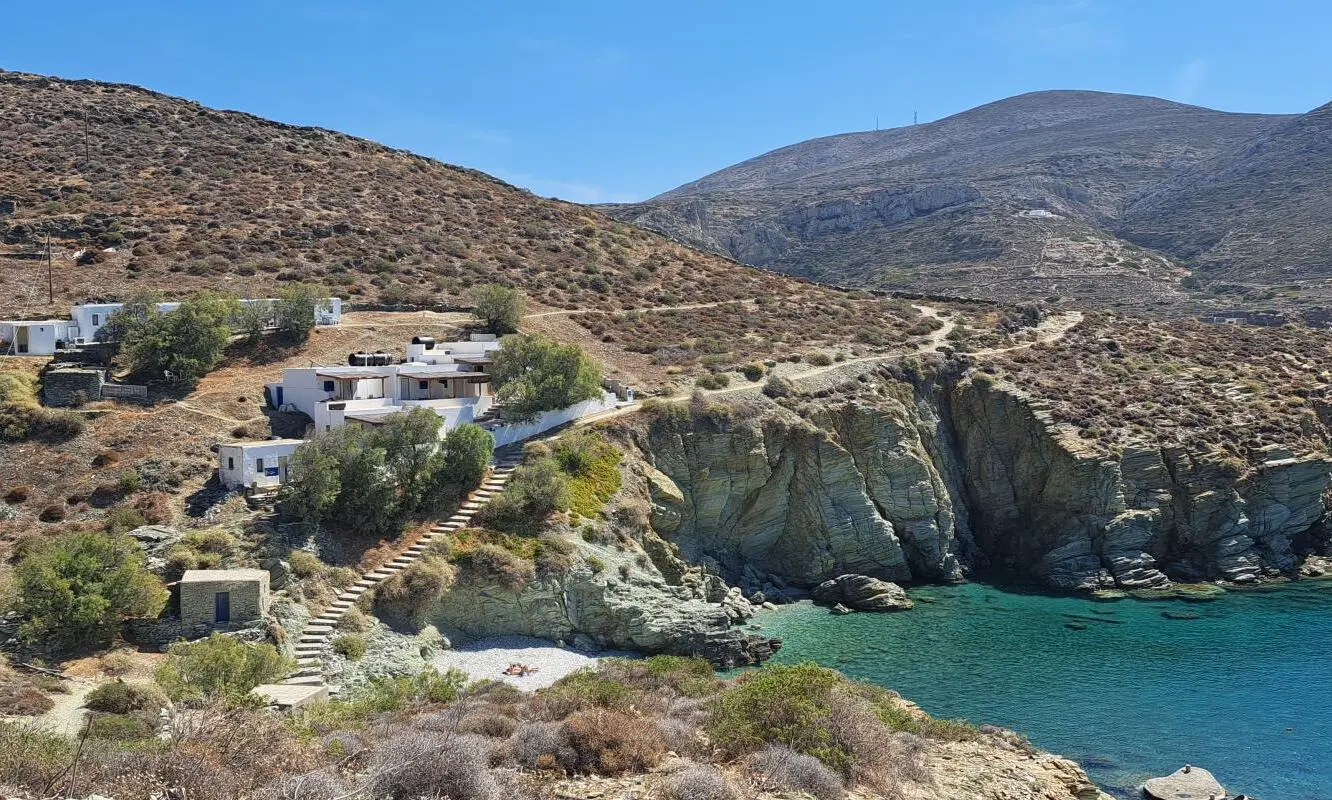
The beach is so small that it seems like a joke, and on top of that, it's rocky. It is very easily recognized by the "garages" of the local fishermen's boats, not at all cared for, mostly in ruins. It is known as a nudist beach, which was quite quickly confirmed to us.
Moving further over another hill, Agios Nikolaos Beach came into view, named after the homonymous church dedicated to Saint Nicholas, the protector of sailors. Additionally, it has two fish taverns on its slope.
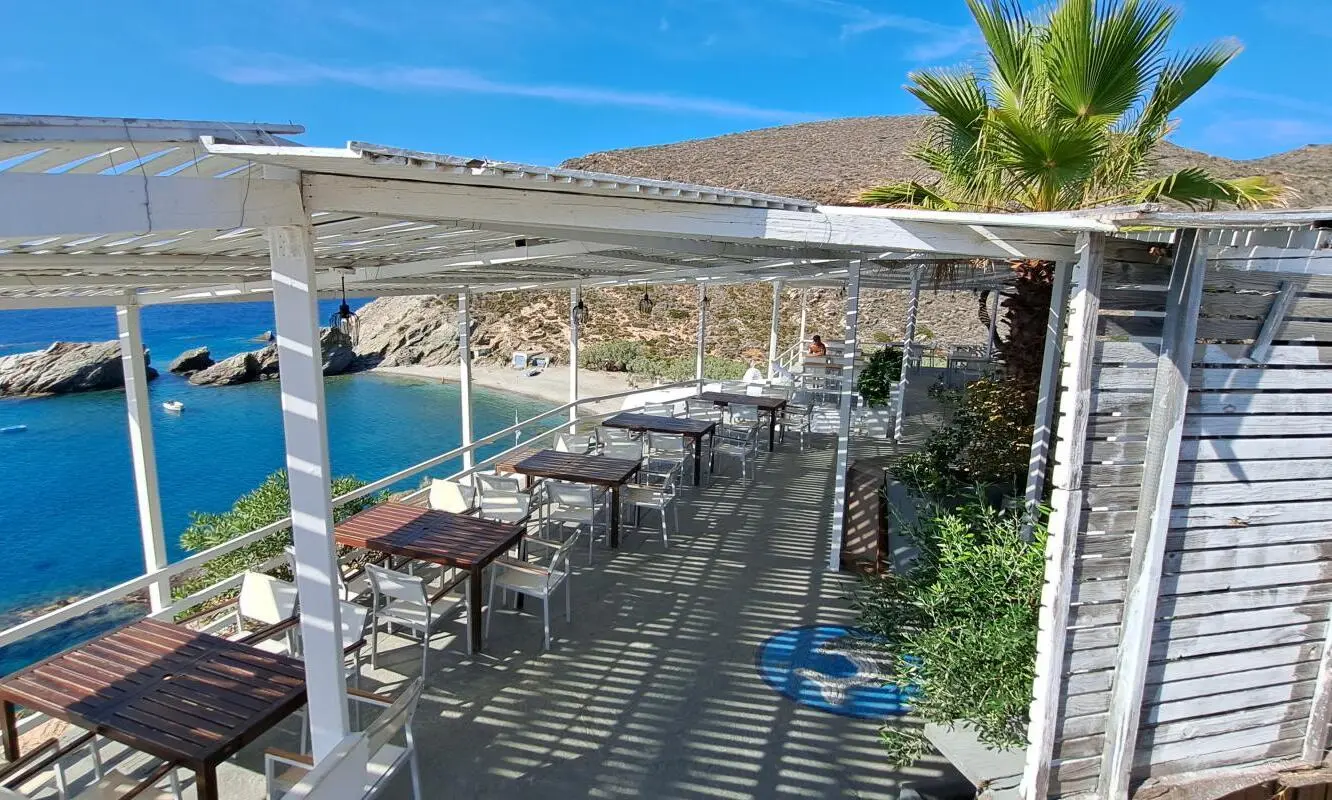
The beach is a mix of sand and gravel, with a gentle entry into the water, among the rocks on the bottom, and is also shared with nudists who had positioned themselves towards the north of the beach.
The easiest access was by water taxi, which had regular routes from Agali, so it quickly filled up with many Italians who came in groups to “conquer” it. We stayed for about two to three hours in total relaxation, especially since there was no wind at all.
Other beaches not to be missed, but which we did miss, include: Katergo, famed to be the most beautiful, Ambeli, Livadi, which can be best accessed by sea, and a short distance from Karavostasis port would be the trio of Latinaki-Vincenzo-Poundaki which deserve some attention.
Other Useful Information
Folegandros does not have an airport; the only way to reach the island is by sea. In this regard, it is connected through vessels of various kinds by several companies from Piraeus, as well as the neighboring islands.
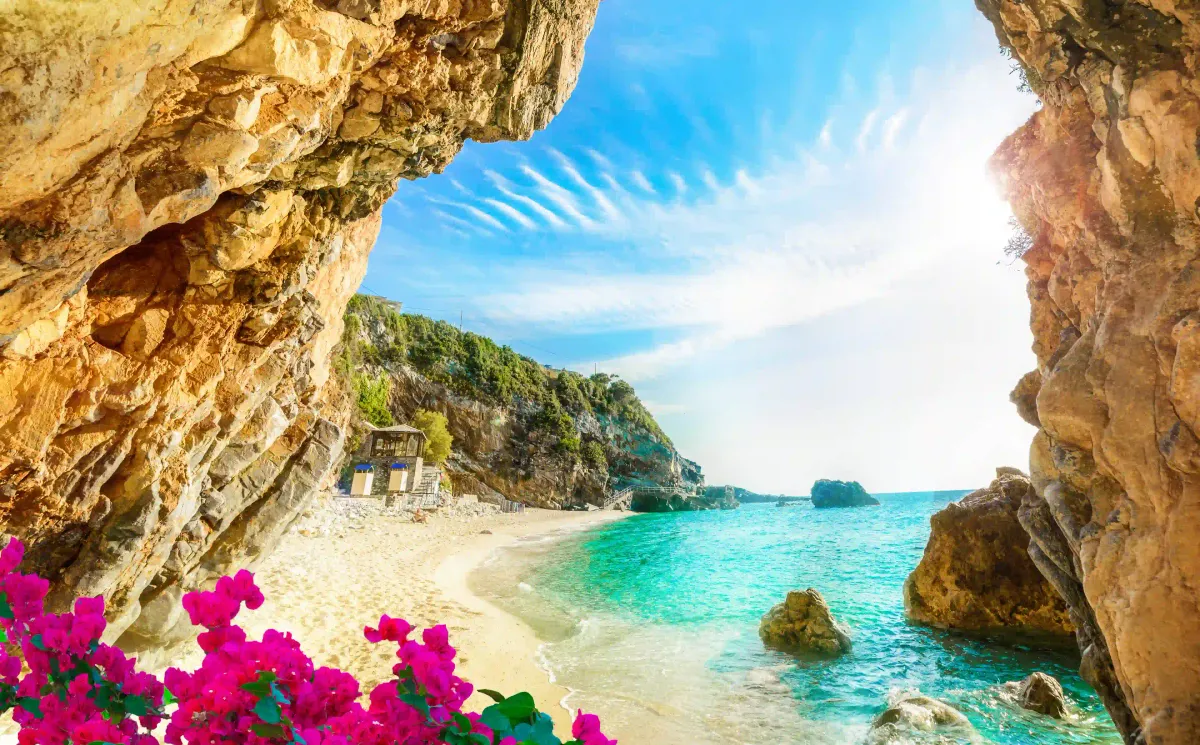
In Chora, there are several ferry ticket agencies, as well as travel agencies. If needed, there is also a small heliport to respond to any emergencies that may arise.
Once on the island, tourists have access to public transport provided by a local company that can transport them to the capital Chora or the village of Ano Meria.
Public transport also operates for trips to the main beaches and is most often conducted with minibuses. Ticket prices are modest, and routes and details can be consulted here: https://www.folegandrosbuses.gr/index.php?language=en
In Folegandros, there are several hiking trails, making it very suitable for those who love to move and engage in this type of activity. They are well-marked and do not cover distances longer than seven to eight kilometers.
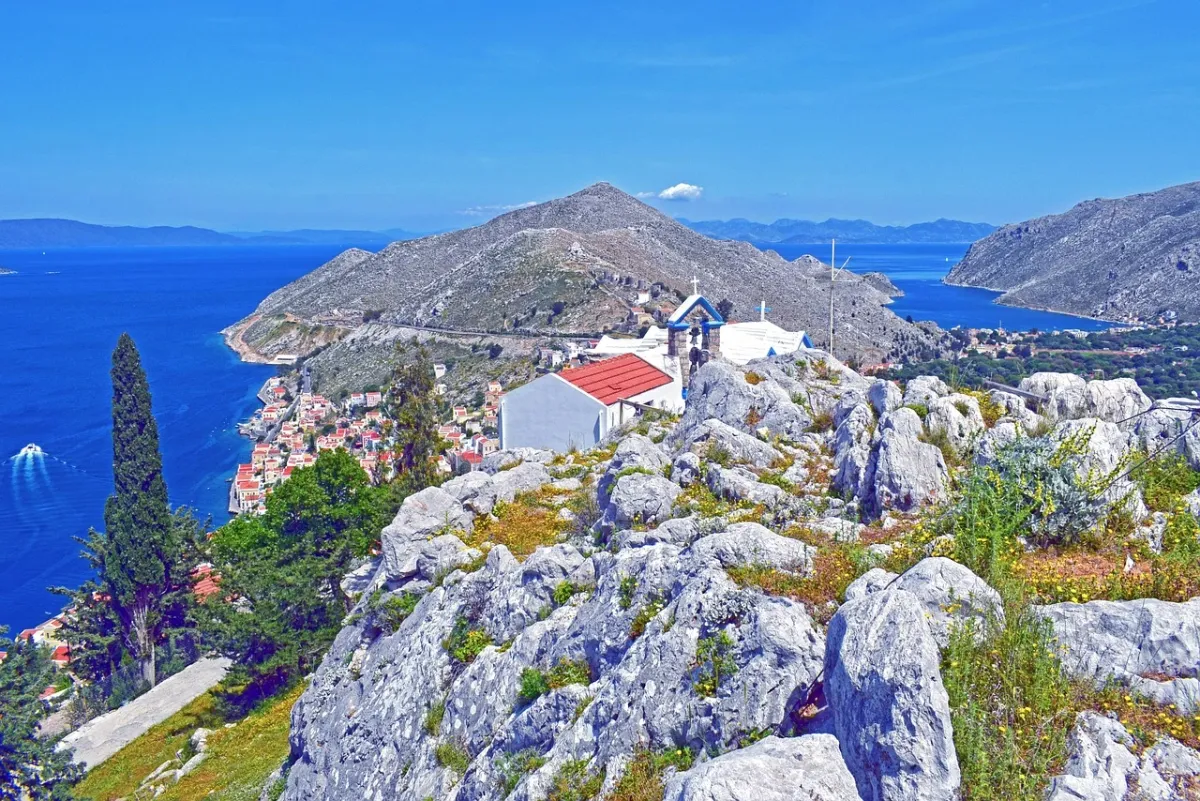
I must also mention, even in passing, the Chrisopilia cave, which is located somehow under the mountain on which Panagia is perched. It is famous for remains of human bones, inscriptions of names on the walls from the 4th century BC. Access is not allowed as the place is still being researched by scientists.
Conclusion
I've come across many praiseworthy expressions and just as many epithets addressed to this absolutely enchanting piece of land. I agreed because Folegandros has irreversibly conquered us too.
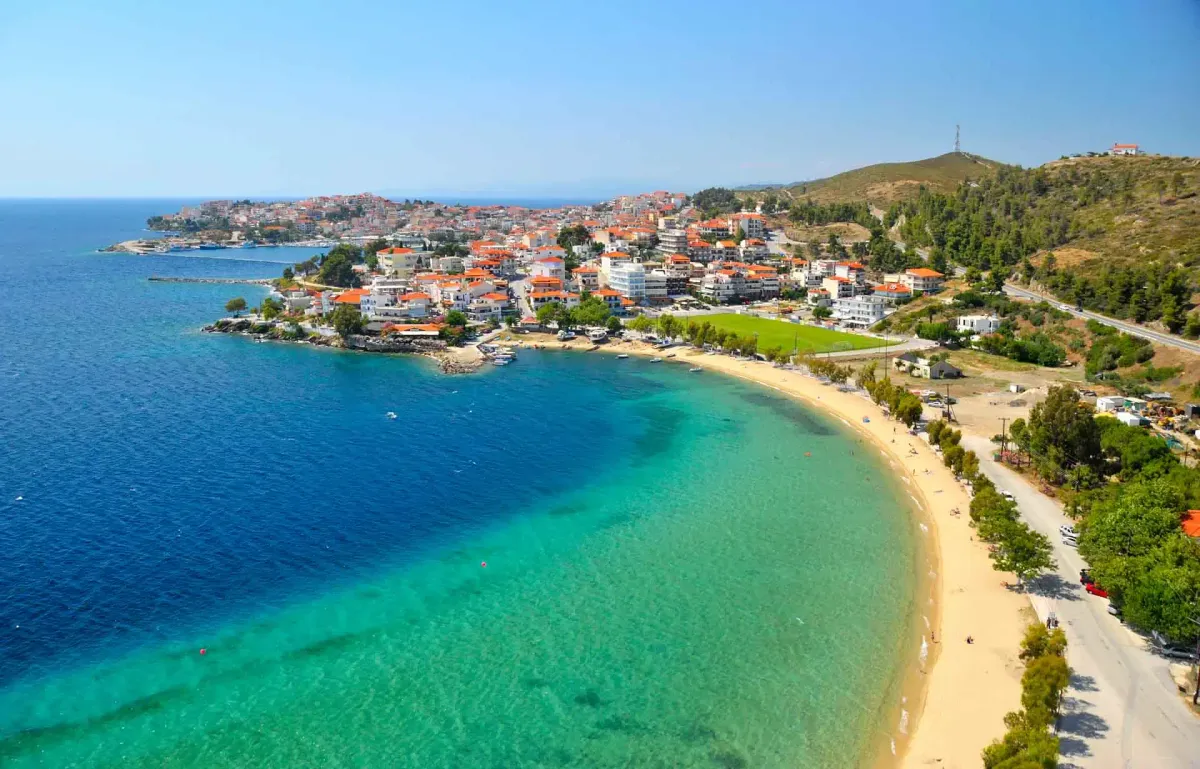
Folegandros is, above all, romantic, but also a paradise for those in love with nature or those who adore the Cyclades, boasting one of the most beautiful villages in the archipelago, a fact recognized by CNN as early as 2017, which declared the capital “one of the seven most beautiful villages in Europe”. Chora seemed to me magical, bohemian, elegant, exclusive.
If the opportunity arises, visit this small island, it surely will not disappoint!
Thank you for reading and make sure to subscribe. We're constantly exploring new destinations and share our stories, tips, and the beauty we discover along the way.


